The visual work I’ve put out for consideration over the past thirty years or so has taken two forms. In the New York gallery work, I was interested in creating a dynamic that would attract and engage, earnest and essential, and then abruptly stop short. I liked the provocative head scratcher. My exhibitions were less the presentation of studio thinking and more the speculative format: what exactly is a work of art? I liked uneasy, overly analytical—leaning on the Large Glass. I conducted my business, like everybody else, within the white-walled protocol. I believe that eventually the audience was willing to suspend the favor of familiarity and partake in the pursuit of the enigmatic engine operating under the floor. Best to get to the bottom of it was my attitude. What is the physics of a piece of culture? Might there be something diagrammatic within the ebb and flow of the aesthetic and anti-aesthetic? It was a theory, like discourse—storytelling.
After New York, I believed, and I still do, that the best approach to getting inside the shifting formalities of art is to become the para-beast and chase down whatever sweats to the surface. The best chance is to throw anything at any wall, wrestle a graphic out of what’s stuck, and quickly move on. Don’t hang on to it. The iconoclastic, by definition, stays out of reach, so pursuing it directly kills it. At the end of it all, I hope to have a giant slag heap of graphics and files, and to pick through it someone might find something that resonates. To anticipate that connection is the failure of the equation. Playing to the audience winds up as entertainment, which isn’t terrible, but it’s not what I’m after.
Quantum Journalism
“What drives Genetics With French Revolutionaries, for example, is a democratic faith in the recitation of facts. Balk submits that points in historical time are determined by certain individuals and, by extension, the genetic makeup that determines them. By the same token, historical developments lead inexorably one to the other. Thus, the founding of the Viet Minh by Ho Chi Minh at Pac Bo in 1941 begins with John Buyan being arrested for preaching without a license in 1600. To Balk’s mind, empowerment resides in visually conflating these facts to reveal a larger pattern. The fact that this pattern may be an illusory sequence is of no consequence to him; it is the circularity of process, both conceptually and otherwise, that is the key. Thus, his sculpture of Ho Chi Minh’s fire pit at Pac Bo with pieces of a Dead Sea Scroll jar is “incomplete” and can only depict fragments of what lies within a wider, historical frame of reference. What matters is the act of contextualization, reaffirmed here by representing the physical process of the work's fabrication mid-stride (i.e., casting in hobby plaster with the mixing buckets still visible).” —Howard Halle
New York 1992 - 1996




Gallery With Theater
Historical narratives don’t perform well with groups of individuals who have little in common. An obligation to history generates the illusion of the collective, which rejects the inconsistencies of the individual.
New York 1994 - 1998
Prophet’s Plain
Bitter Taste
Emerson Outside Islam




In the theater pieces, the characters are always detached from their original historical narrative. For example, in “Prophet’s Plain,” 1994, the Indigenous Americans are performed by Asian Americans, directed by an overbearing Irishman, attempting to comprehend, in rehearsal, the significance of the Wounded Knee Ghost Dance religion. Simultaneously, the gallery space is connected to this narrative as well, so in this piece as in others, the work in the gallery was a physical reference, or further narrative clue, to the action on the stage. The theater activity was an extension of the sculptural object and the gallery experience. I was experimenting with what might be plausible for the work of art to claim as its territory for potential reception and meaning.
Photo Magnetic Receiver
Should it remain a mystery how a polished object, temporarily relocated into a pristine white gallery space, ignites a delightful satisfaction and is uniquely entertaining—intellectually speaking? The pedestrian stand-and-look transforms into an immediate, uplifting spiritual awakening, attuned to the universality and timelessness of the sublime. There may or may not be physics involved; either way, someone has to embrace the responsibility and investigate further. Can the experiment be an earnest, more-or-less systematic replicator of the art experience? And if there were such an apparatus, what would be the engineering of the object that could literally trigger the experience? And, not to be overlooked, how would the unsuspecting participant be made aware of the potential danger of the physical apparatus and the ingested chemistry involved? Exactly the mock-theoretical premise of a proposition, however puerile, that served as impetus for a variety of works and installation materials. There were the initial sculptures, and those were followed by graphic explorations that extended into several years.
New York 1995 - 2009
Photo Magnetic Receiver
Monochrome Current Density Field With Anomalies
1890 - 2090
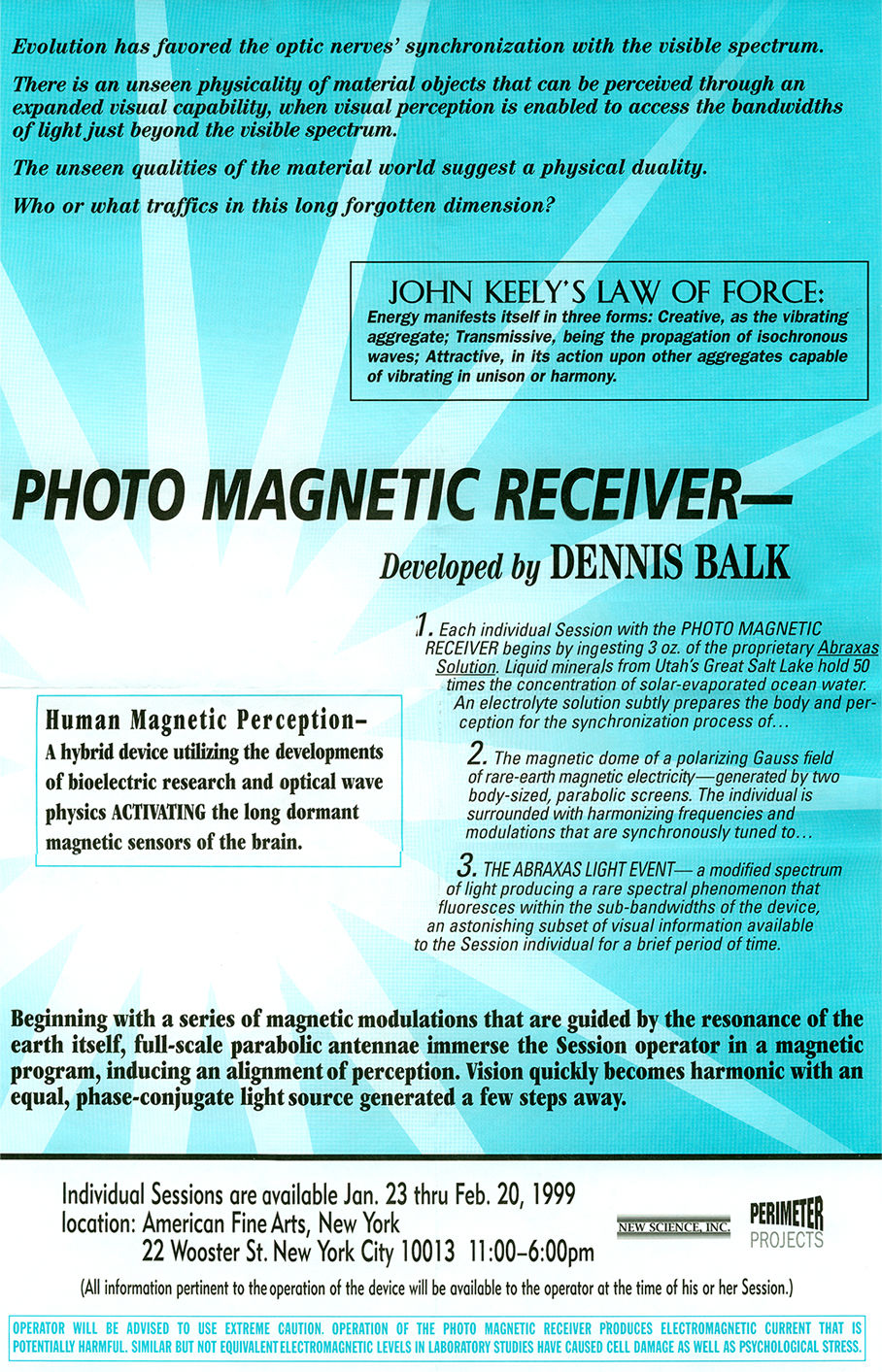



“If Networks Aren’t Metaphorical, What Are They?
Unfolding practices constantly performing and restaging their limits. Practices generate incidents generate practices. In his Data-Accumulation Print-Outs, Dennis Balk uses images produced in photo-luminescence tests of metals. Science is a trap door to the non-visual: applied high-end instrumentation (is technology a magic wand?) excavates bandwidths typically off-limits to human perception. The prints push the idea that something remains hidden on the other side of vision—the trick is to access it. Balk’s partially wrapped array-objects (are they sculptures?) are components of his Photo-Magnetic Receiver, a device that may or may not allow a test subject to “see” on this photo-magnetic spectrum. Dropped out of their initial contextual fabrics, the arrays become mere stage props for Balk's unique brand of analytical theater while remaining aesthetic objects in their own right. When does art become a hoax? When do we believe in its power to move us beyond limit conditions? What is the viewer’s role? Balks’ practice is one of testing, and as such, it literalizes the metaphorical.” —Tim Griffin & Bennett Simpson
Particles + Waves with Plausibility
“Balk has been consistently engaged in following developments in contemporary physics for some years now. And if at first his practice as an artist intuitively contoured itself into the extreme conflict between fact and fiction within that sphere of endeavor, it now understands itself more and more within those terms and less and less within the terms of contemporary art as presented in the pages of Artforum. We shall talk more about this later, but suffice for now to say that the difference can be suggested as follows: one arena sees the conflict between extremes as a fertile ground for the creation and negotiation of meaning that will ultimately arbitrate and make sensible to everyday human understanding the grounds for our philosophical misunderstanding (here, the good liberal humanist approach to the world), and the other attempts to gauge whether humankind is capable of existing in the vacuum created by the mutual annihilation of opposites (here, the potentially disastrous end-game of astro-physics predicting a genuinely post-human cold universe).
New York 1999 - 2006
Rocky Horizon
Particle Studies
Scanning Electron Micrographs
Particles Accumulation
Data Accumulation
Meme Fields


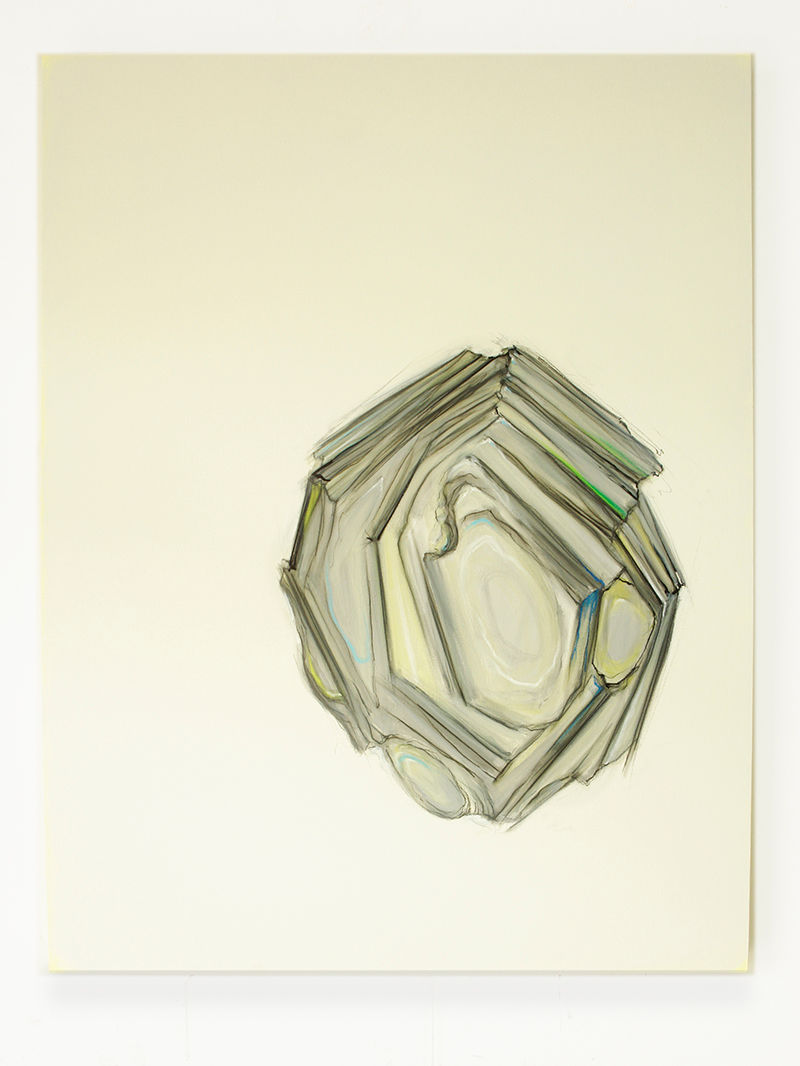


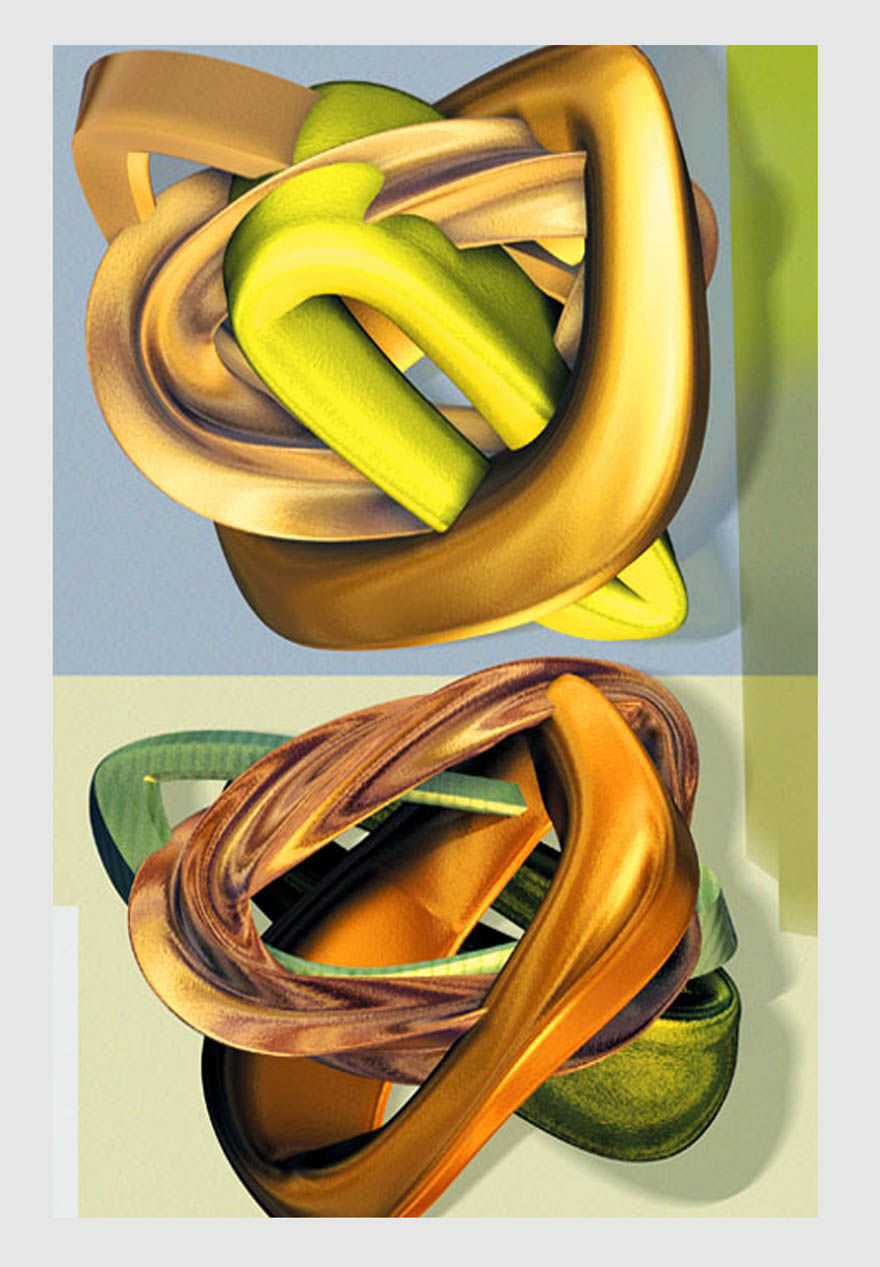


It’s not all bad news. As Balk comforted me during our interview, not only is the disaster scenario so far away in time as to be beyond my mortal ken, but there are as many good news stories as bad told about the patterns being played out in the universe’s development. However, what is common to both the bad and the good news is a common acknowledgment that the status of the middle, which risks disappearing under the forces of the extremities, is highly contested. And what seems to motivate Balk is the question of what qualities, shapes, and colors we give to the endangered species of the middle, as it fields the contest between the extremes. Working within an artworld that generally attributes value only to the extreme (whether it be Greenberg’s extreme reductionist formalist story of modernism or the extreme conditions of artistic persona), Balk seems to be discovering the language of the extreme—love, desire, ethos, and pathos—already within the terrain of the middle. The structure that informs his progress is the relationship between the very small and the very large. Balk’s current work focuses on developments in nanotechnology, a level of inquiry into the nature of the world that seems fated to exist permanently beyond our capacity to visually incorporate into our sphere of understanding. We may be relatively adept at accommodating the very large through religion, but we are only beginning to welcome the very small. And his methodology can be described as a belief in the proposition that all ways of thinking, more or less perceptibly, lead through language in a way that is extraordinary.” —Gareth James
Placebos and Moires
“Writing about the landscape of Tarahumara in The Mountain of Signs In 1936, Antonin Artaud scans light patterns in the rocks surrounding him, picking apart their irregular contours and searching for symbolic forms in the dry terrain’s ridges and ravines. And he believes he finds them, declaring finally that “this symbolism conceals a science.” The desert appearances, in their “strange signatures,” harbor another, hidden reality of a higher order. With the rhetorical fervor of religious epiphany, Artaud—standing, in truth, at the precipice of his own psychological projections, pushing the fine limit of the perceived—professes that “awesome mathematics” underlies all things he sees.” —Tim Griffin
New York 1997 - 2001
Placebos
Moires
Flares
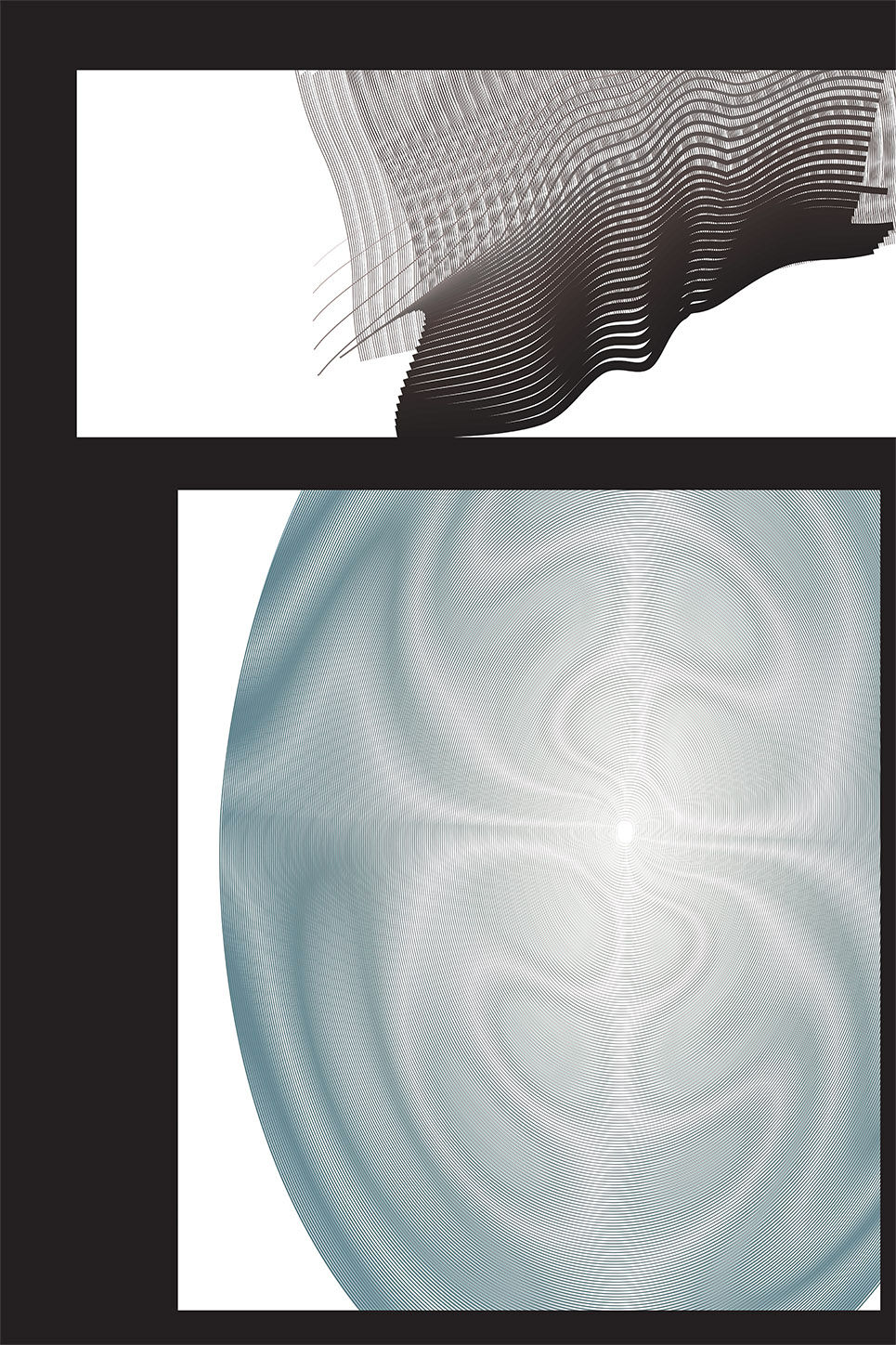

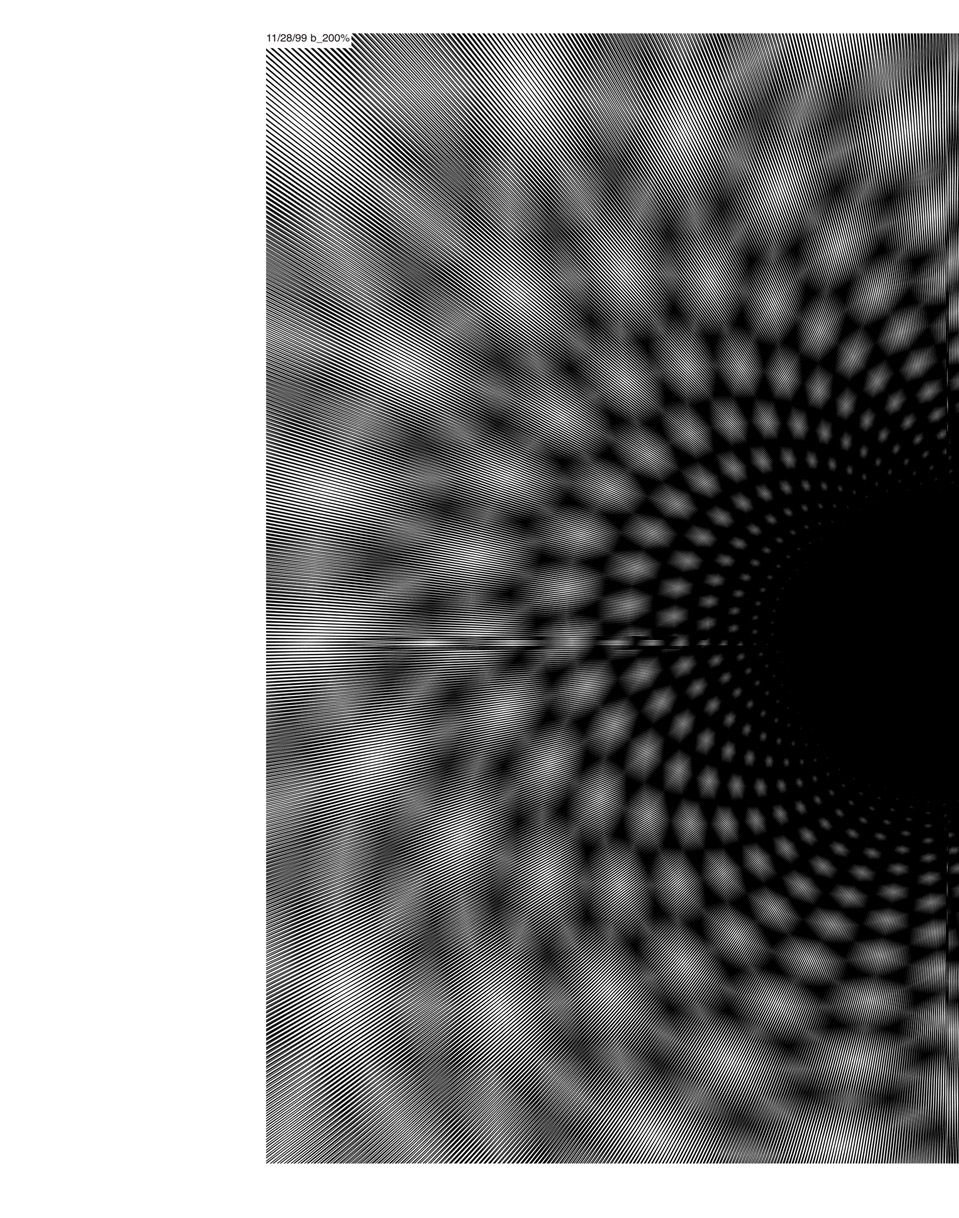

Exhausted Ideographic
DB: Hard facts may actually be the only media I’m now trying to sort through. It is such an extreme way of viewing the Middle East conflict to conclude that a relatively short window of time produces the definitive aggressors and victims. One fact seems more definitive than most, which is that Sunnis and Shias do not see the world in the same way. I see this in every corner of the neighborhood. And the same goes for grass-roots organizations like Hezbollah, at least here in the Gulf. They are mostly a dynamic, productive presence in the everyday community, or so they are received. His picture is on kids’s t-shirts. Among my acquaintances here, he’s hardly the terror-bound enemy of humanity. The cruel loss of life in Lebanon, in which Hezbollah was undoubtedly complicit, cannot be attributed to the organization as a whole, which is the way the people here hope to convince themselves. Indeed, well-heeled reporters only skate across a very thin surface, beneath which lies the true monster: raging contradictions and complexities.
The recent Palestinian media coverage was basically an accumulation of empty sound bytes, 30-second screen crawls, and one-minute stories. It is a life-and-death situation; these abbreviations and misrepresentations are agonizing, unethical, and grossly opaque. There are waves of ornate graphic fictions that swirl through these neighborhoods.
Bahrain, Jordan 2005- 2007
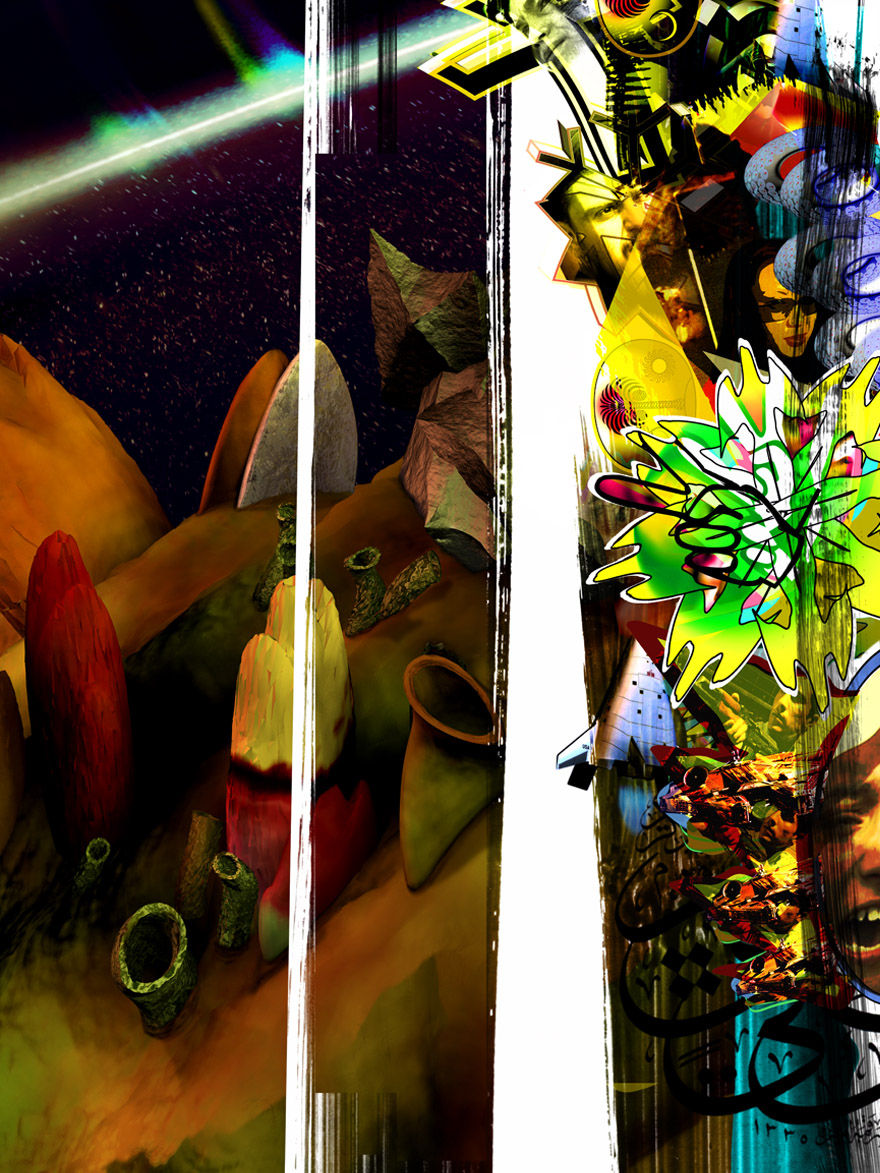

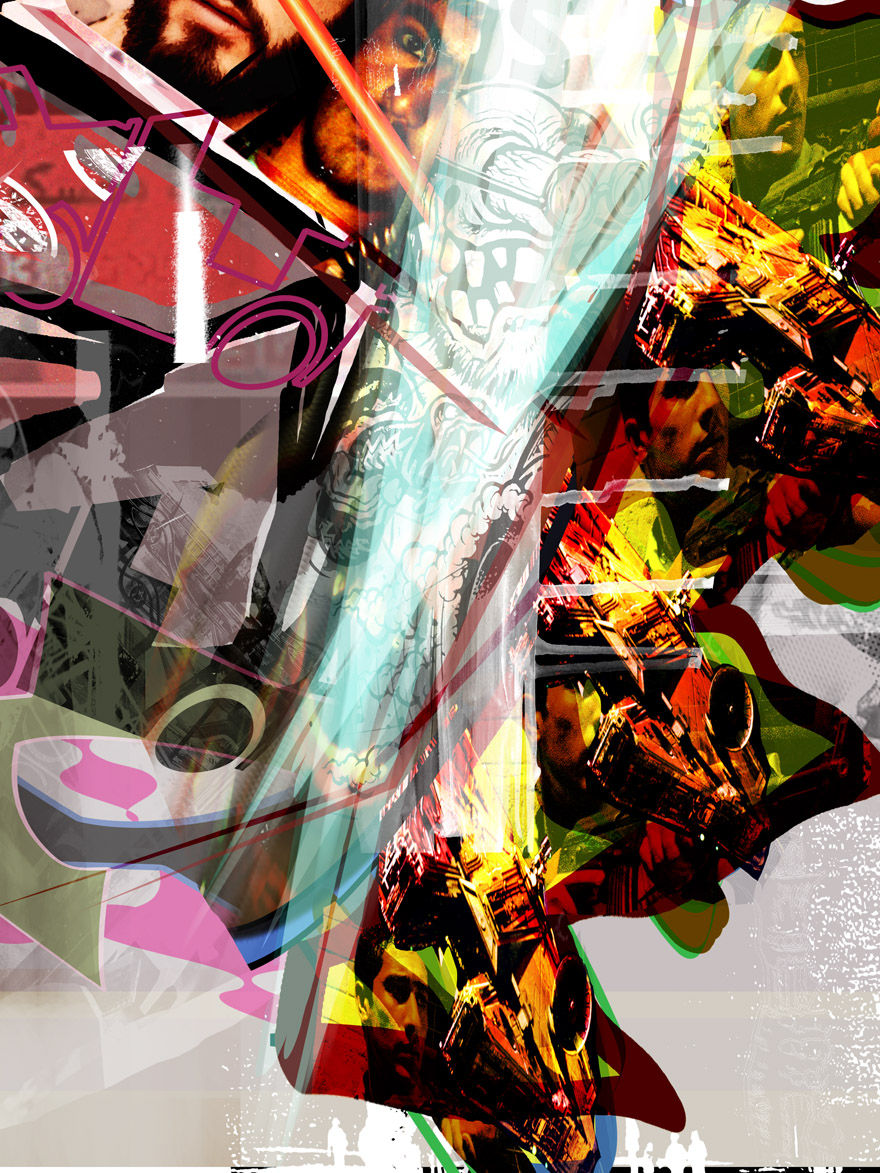

Shards and Splinters
A few years later, when I went back into a lot of the drawings, files, and canvases, I was drawn to the scratches and the broken-off bits—the Kline vocabulary. (Apologies.) It seemed like good media. I collected and archived these and started forcing them together, and those became the first round of shards and splintered pieces that then became something else. These small graphic pictures propelled their own metaphysic and their own story of repellent moments, unstable for anything productive or progressive—a fairly poor quality of abstraction. The half-hearted references embedded in that kind of scrawl are end-of-line. Several groups of those reconfigured pictures got folded in or layered over to become other groups. I liked the idea that, rather than learning as you go and working through crafting an aesthetic, I just used the original marks over and over. First in the Amman hotel, and then in Manama from 2006–2008—repurposing the same marks as many times as necessary.
Morocco, Bahrain, Jordan, Abu Dhabi, Rocabelgna, Italy, California, Bangkok 2002 - 2014


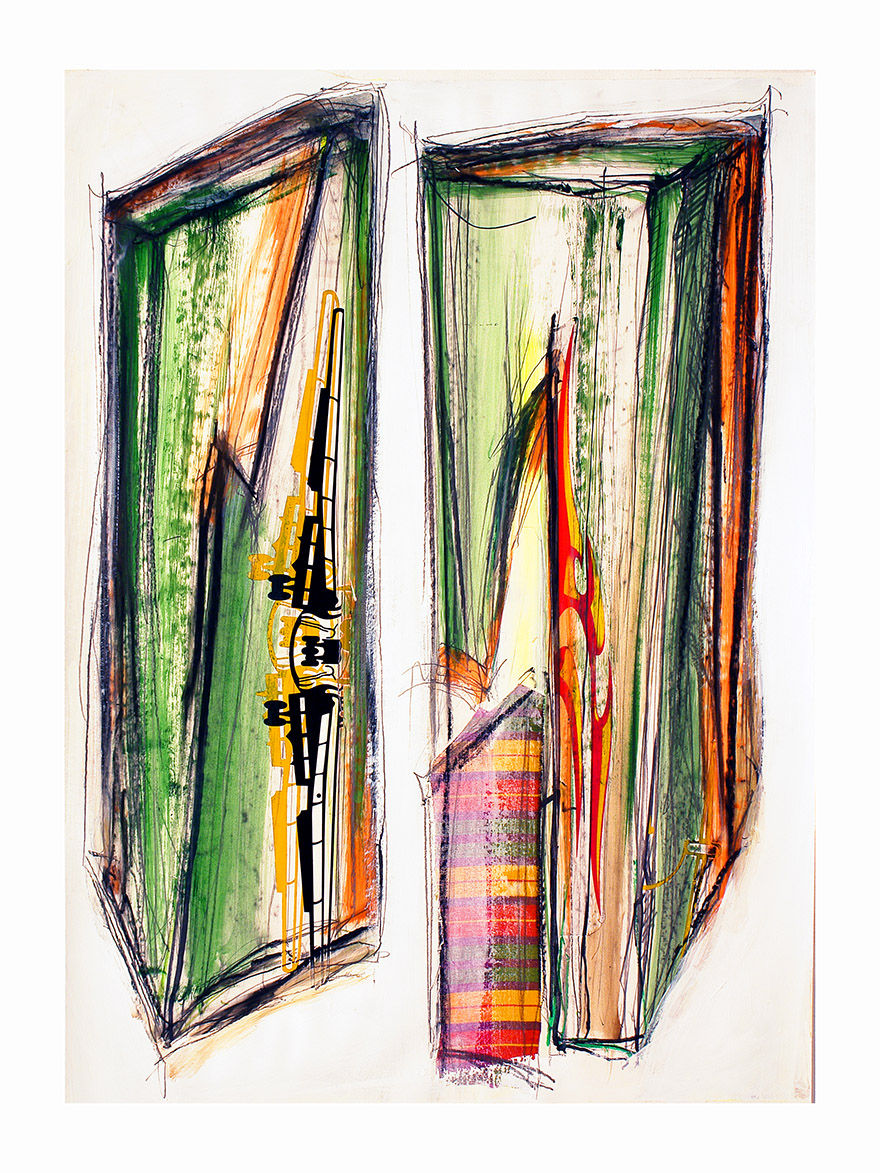

Hashish
Shards With Splinters
Natural Aggression

Scanner
In Amman, Jordan, I was settling in just before the war broke out, and the Israeli aggression was a shocker. Making several attempts to get as close as possible to the edge, the metaphysical border, my desire was to experience the vibe that could inspire some imagery—possibly meaningful pictures. Lebanon on the left and Iraq on the right, I was digging for a journalistic, emotional sense of purpose. A New Yorker replete with contradictions and not an ounce of clarity—no real experience of the Sunni and Shi’ite, no clear image or firsthand knowledge of Palestine. A fair-minded artist, ridiculously ill-prepared for anything—useless to the real world. I had been on the verge of this work, preparing myself conceptually before leaving New York. In ‘04 and ‘05, I worked on the Exhausted and Ideographic pictures, trying to force relationships from torn pieces and spurious associations of ideographic fragments. The five-panel piece Scanner Darkly was the culmination of this—pushing an old-school pop-contemporary frame, thinking of Brice Marden. While in Jordan, camera in hand, I made several visits to the Wehdat Palestinian camp, established in 1955 by the UN for other, earlier refugees of Middle East warfare.
The photo shoot was naïve and dangerous, and the timing was really bad. I got some portraits in, and the good-natured curiosity of those gathered shifted. I didn’t see it coming. Thankfully, before the situation turned disastrous, internal security showed up and escorted me out of the camp. Later, across the desk from a very serious man, the head of Jordanian security, the situation could have gone south pretty quickly. Now the mood is almost jovial as he is asking me what kind of art I make as a photographer. “How interesting you are from New York! And you have come all this way to my country.” I let go a few quick stories, and just like that, he’s as charming and gracious as you could ever hope for, and it’s over. He stands to shake hands, signaling time to go. “Do not go back to Wehdat or any other camp. For your own safety.”
Metaphor The Ill Guest
Twisted words and religious politics brought me to the cave, on the side of a mountain in a town in medieval Tuscany. In that studio, I produced the full set of panels for the Ill-Guest suite, which became very important to the Splinter Group Bangkok visuals. The Tuscany studio was a tiny, carved-out hole in the side of a mountain. In the middle of this medieval town, all of it built into the side of the mountain. The studio had bats at night, so I worked primarily during the day. Still with my Sony camera, I produced the pictures—58 are in the suite.
The real story of Bahrain is that I was suddenly in a lot of trouble. Without going into detail—there are people that cannot be compromised—it was very frightening. A misunderstanding at the university, and that night, I was summarily escorted to the airport and put on a plane. The end of one story is the beginning of another. Off to Switzerland! Luckily, I had family there at the time. We drove across the mountains—to Roccalbegna, Italy, one of those small medieval mountain towns in Tuscany. And there I spent a full year in hiding, or at least with a low profile, waiting for contact from the appropriate people and a good lawyer. The case skipped through the New York circuit courts and went as far as knocking on the door of the SCOTUS—they rejected it.
Martyrs Menu
Heads in Los Angeles
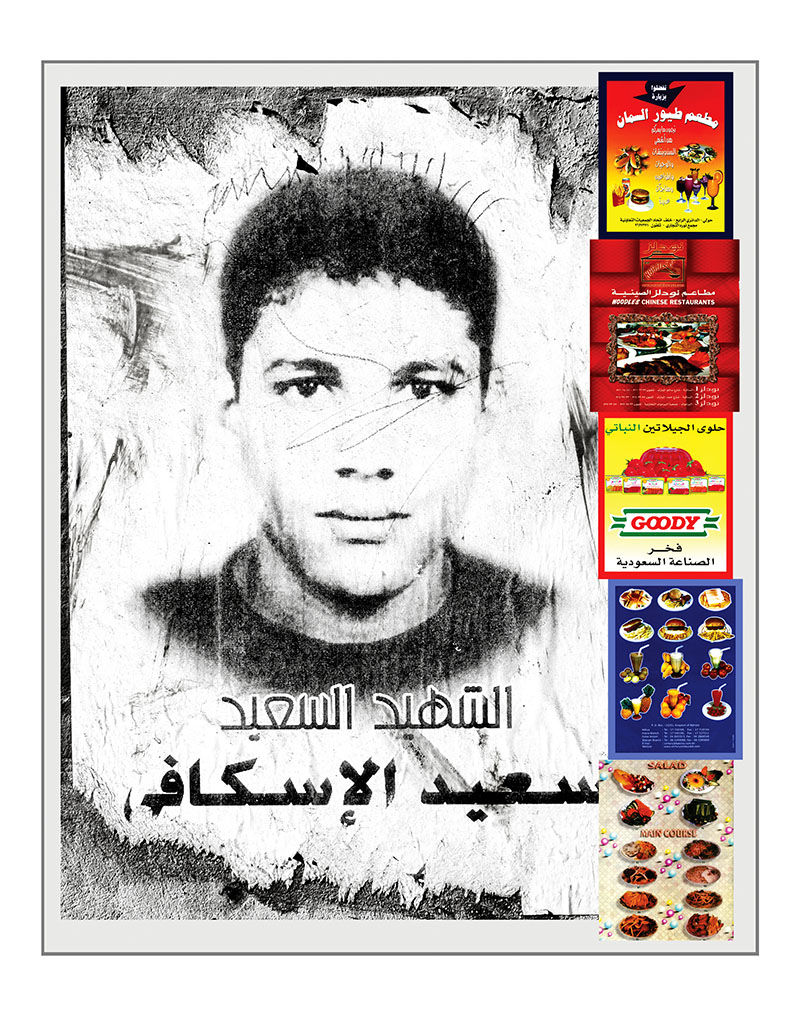
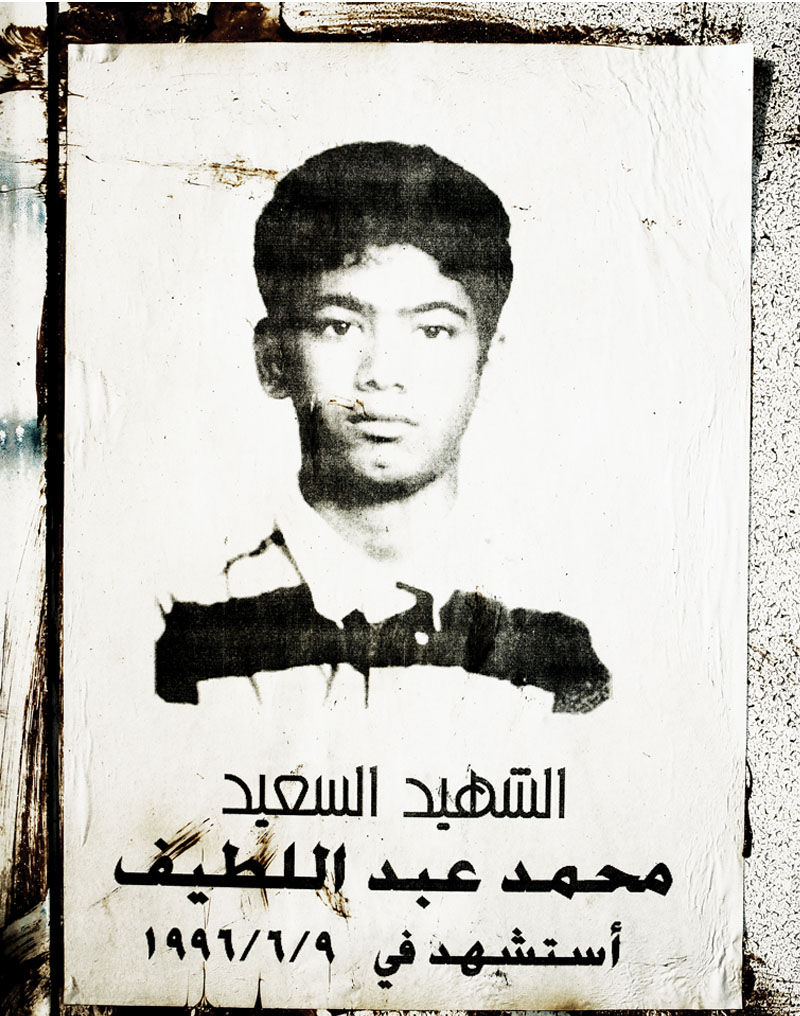
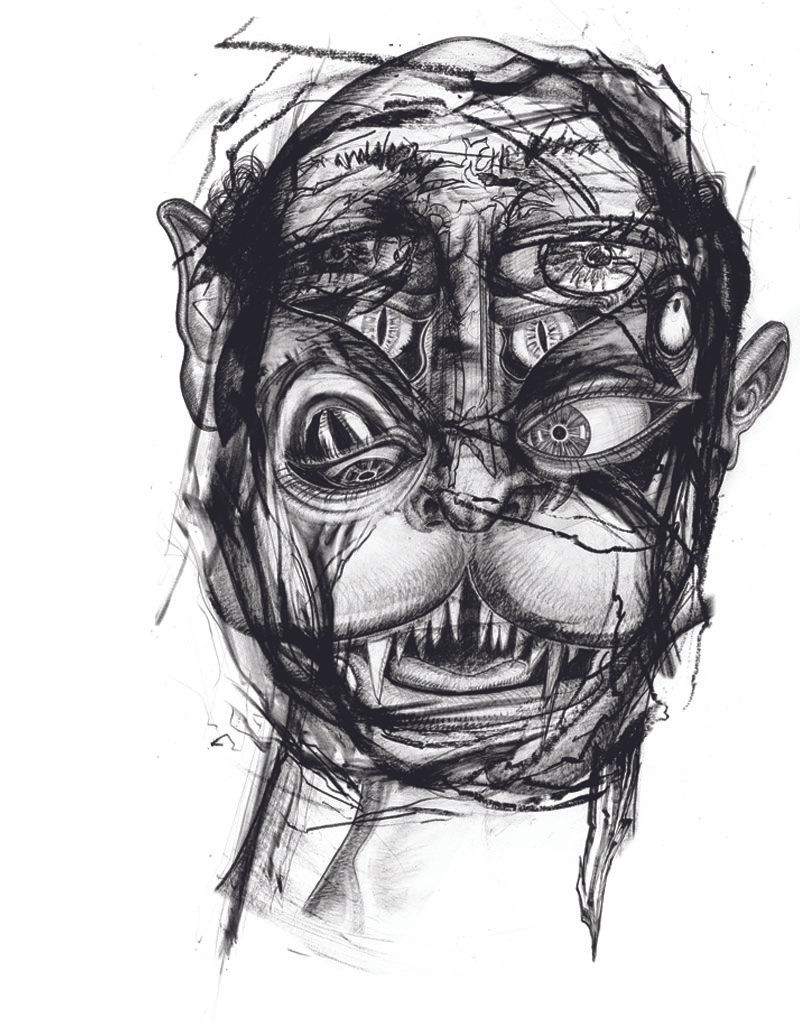

Roccalbegna, Italy, Venice Beach 2006 - 2008
The Ill Guest
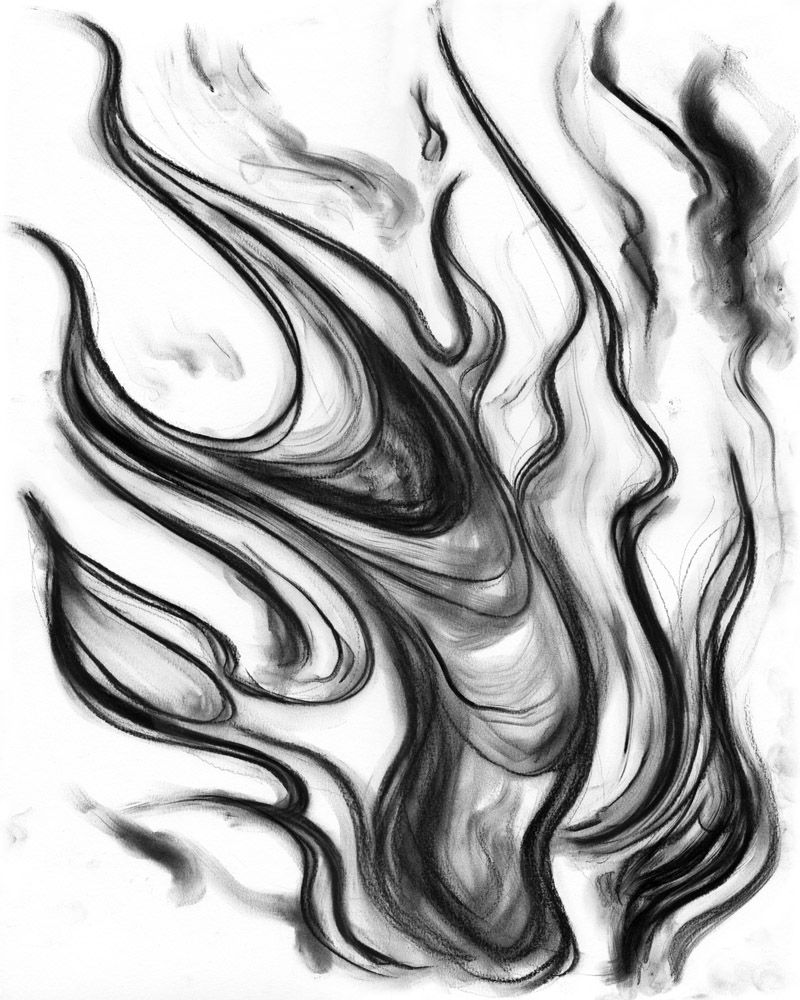
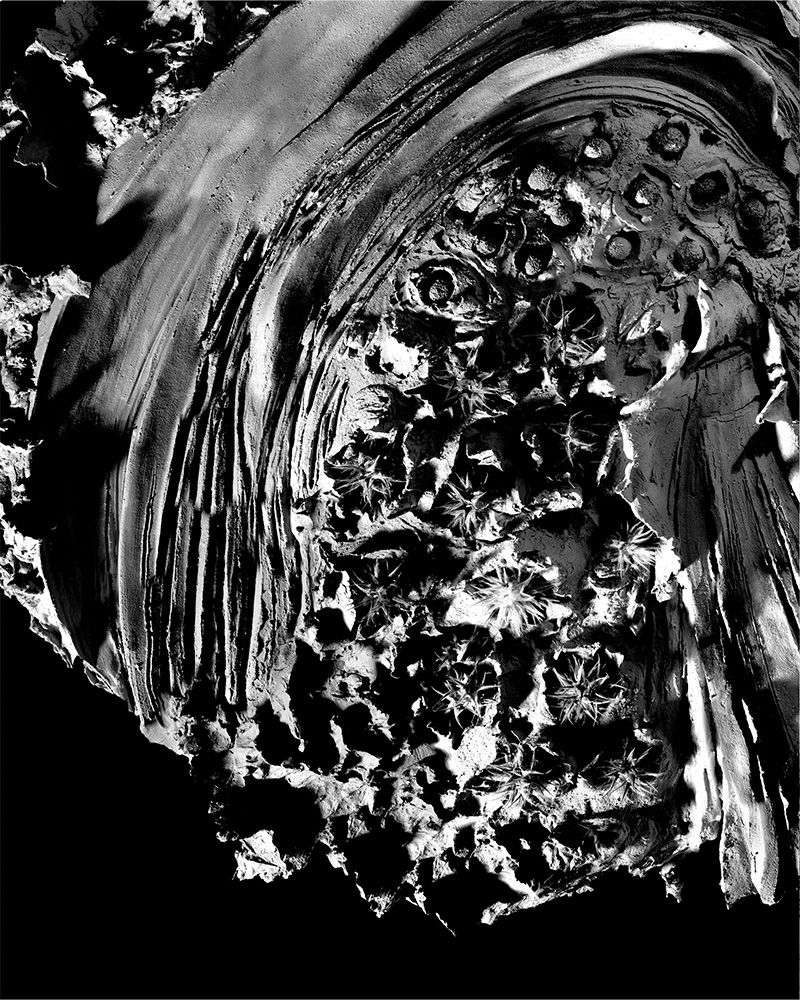
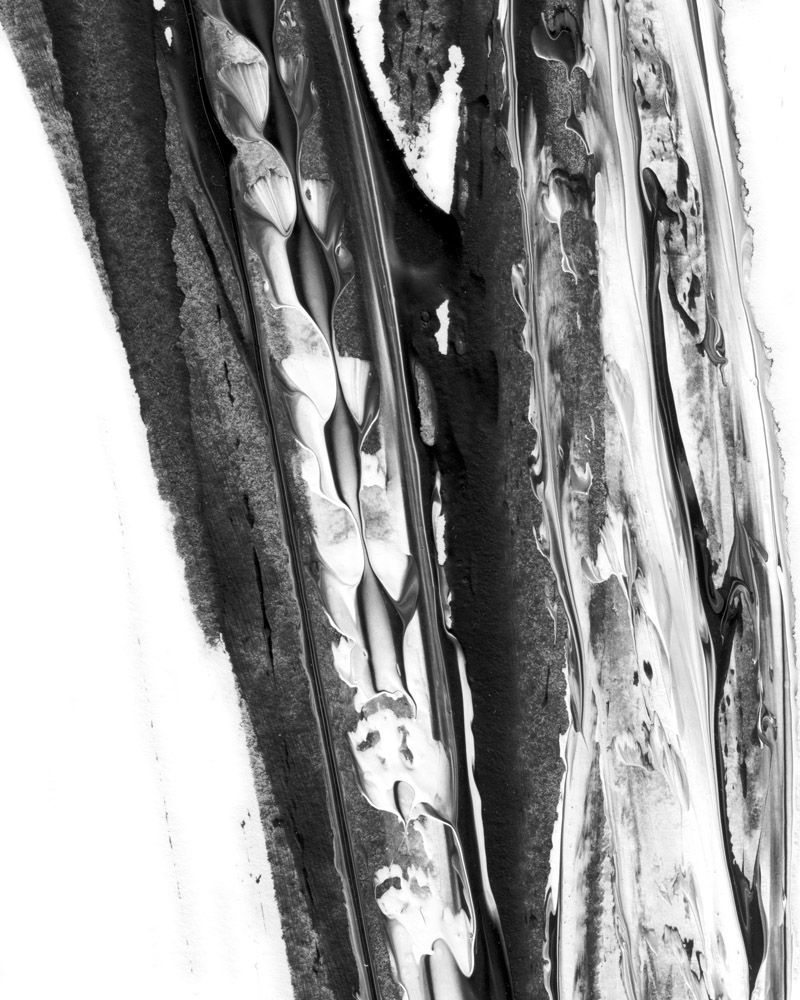

Most of the pictures started as modeled clay surfaces of the culture particle concept. Somehow, I had a lot of hobby clay. There are also a lot of pictures of spray-painted stenciled cutouts. I cut out stencils of just the faces from Francesco Goya’s Los Caprichos series. There was a variety of studio work, all of it with particularly crude materials, but everything got photographed. Sometimes I would need an image I couldn’t get my hands on directly, like the photo of the black power, raised fist athlete on the award podium—that famous photo—so I ordered the poster through the mail. This went on the whole time I was there in that bat-cave studio.
Hurly Burly A Play By David Rabe
I hoped with this extended suite to address conditions of narrative used to facilitate the historicizing of the present—my perennial theme. Also, in relation to my previous theater work, this project continues the exploration of character-driven narrative as a visual motif and subtext for history’s indulgent mini-dramas. My concept of political dysfunction is based on Rabe’s play of a contemporary aesthetics machine, namely, mid-level Hollywood types, riddled with the failed personal ambitions that create the hornets nest of contradiction sufficient to deaden any kind of progressive spin. The subtext of the Hurly Burly project suggests that we, as political participants and social beings, have moved into the era of hyper-contradiction, choking on the inability to mobilize any credible political template to get ourselves organized enough to circumvent the dreaded demoralizing force of pop drift.
I like the primary concerns of the David Rabe play (1984). Namely, the Hollywood Hills dark comic drama that “explores isolation and confusion expressed as an impotent search for meaning.” The characters barely try to define themselves, then find they can’t and don’t care to. Theirs is a lazy slide through what should be important and, minimally, a reach for transformation. Glitzy monied boredom, plumbing the depths of irresponsibility in the face of the larger culture machine itself, irresponsibly desperate for something sincere. Whatever discerning capacity they were supposed to have, packed up and left. Failed effort. Humor not particularly funny. Intelligence not particularly smart. Politicians and the socially righteous share purposefully worn-out meme semiotics and the persistence of a dangerously ambivalent world—something like that.
Bangkok, Mumbai 2007 - 2018
Printer Tests
Exhibition Posters
Civilians and Military




Cairo Speech
Desert Camp
Midnight Coup




“...and within the gallery networks, the para-fictions in Hyperrelational Aesthetics reflect the collapse of the neoliberal economies, which allow and actively entertain a variety of civil intolerances now seen as the necessary failures we require to move us all closer to a world of corrected insights and modified and down-scaled goal-seeking.
Once again, the critical audience and regular gallery viewers will have the opportunity to attempt to decipher the seemingly contradictory and borderline irresponsible graphic work of Dennis Balk. The work is comprised of a dozen or more large-scale pictures and painted canvases, theatrically installed, that appear to have been left behind when, somewhere, for some unknown reason, a traveling circus abandoned them upon leaving town. For now, these pictures and leave-behinds are warehoused until some future time when they regain a purpose. Other references are engaged in the work, some from within the canons of contemporary art, but taken as a whole, the viewer is presented with an array of references that give even the skilled gallery goers a run for their money.”
Dangerous World
Most of the work for these pictures was fast—photography and quick graphics. Walk the streets. Keep a low profile; don’t draw a crowd. In Amman, I lived in a hotel for quite awhile, so a studio was not really an option. I was living outside of New York for about half of the time represented in these pictures. I did make several trips to the Middle East before I left, and eventually I did leave in the summer of 2006. From Bangkok, I had to go into Cambodia for a visa. My normal process is to take images from one group and re-manipulate them for another group. I used and reused these photos in many other suites with other intentions and other interests. I like using image files that are already very colored, distorted, or processed. Also, pictures may have been used for multiple exhibitions or for exhibitions other than those to which they were originally suited.
Giza, Abu Dhabi, Jordan, Bahrain, Mumbai, Cambodia, Bangkok 1993 - 2013
Notes On Turner




Dangerous World
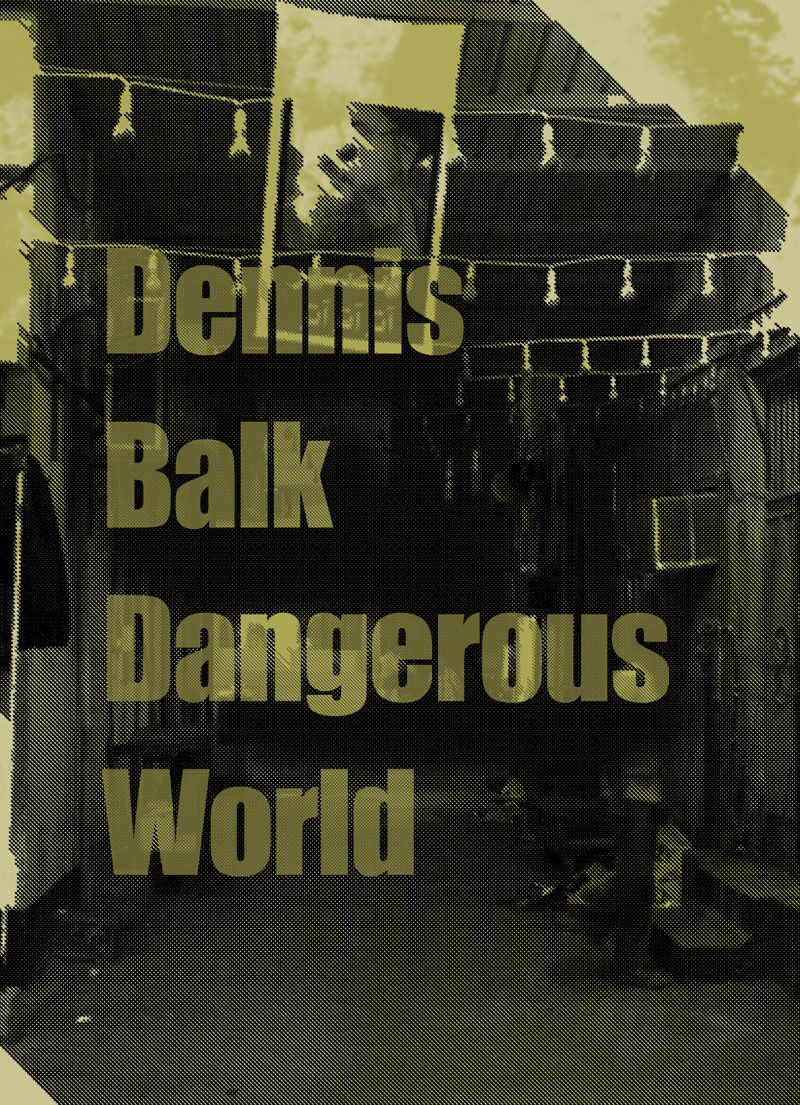

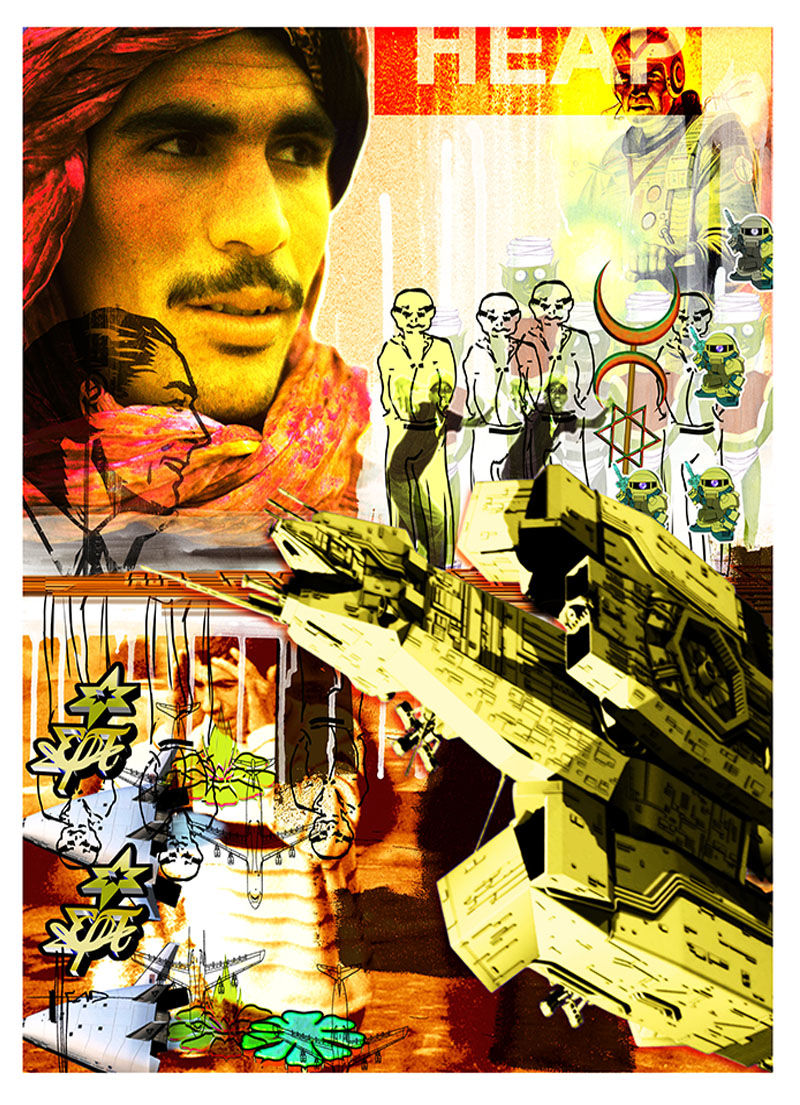

PRELIMINARIES, INCOMPLETES AND SCHEMATICS, Broome Street studio New York, 1989 – 1993
1890 - 2090, Broome Street studio New York, 1995 – 2004
PARTICLES + WAVES WITH PLAUSIBILITY, Fez Morocco, Cairo Egypt, New York, 1995 – 2004
EXHAUSTED AND IDEOGRAPHIC, Cairo Egypt, New York, 2001 – 2005
HASHISH, Amman Jordan, Cairo Egypt, 2006
SHARDS AND SPLINTERS, DISTRESS TROPES, Manama Bahrain, 2006 – 2007
METAPHOR THE ILL GUEST, Roccabegna (Tuscany) Italy, 2009
LOS ANGELES, Los Angeles, 2009
DENNIS BALK HURLY BURLY A PLAY BY DAVID RABE, THE CAIRO SPEECH, DESERT CAMP, Bangkok Thailand, 2009 – 2011
THE CIVILIANS AND THE MILITARY, SPLINTERGROUP, Bangkok Thailand, Mumbai India, 2011- 2012
La Metafore Initaziale
This is the scribble and scrabble of nihilist cartooning, and toddlers redacting with spray paint, ironically defacing the suspicious nature of high conceptualism. Stuck in the contemporary, our defacement-as-cancellation is the remnant of the forever-lingering avant-gardists’ strikeout and do-damage strategy. The institutionalized vigor of antagonists and protagonists as the primary thematic conceived to never completely extricate from the smoke of earlier twentieth-century anti-fascism and signs of indictment.
Bangkok 2011 - 2016
Distressed
Code for Metaphor
The “antagonistic” continues to animate a variety of trending aesthetic vernaculars against the shifting backdrop of iconographic migration and the last of the remaining diasporas, critical of western democratic idealism. The point being, we’re not all on the same page of ironic double-entendre coding. It does appear we’re stymied to a default: a looping critique of trend-championing the mercantile esoteric.
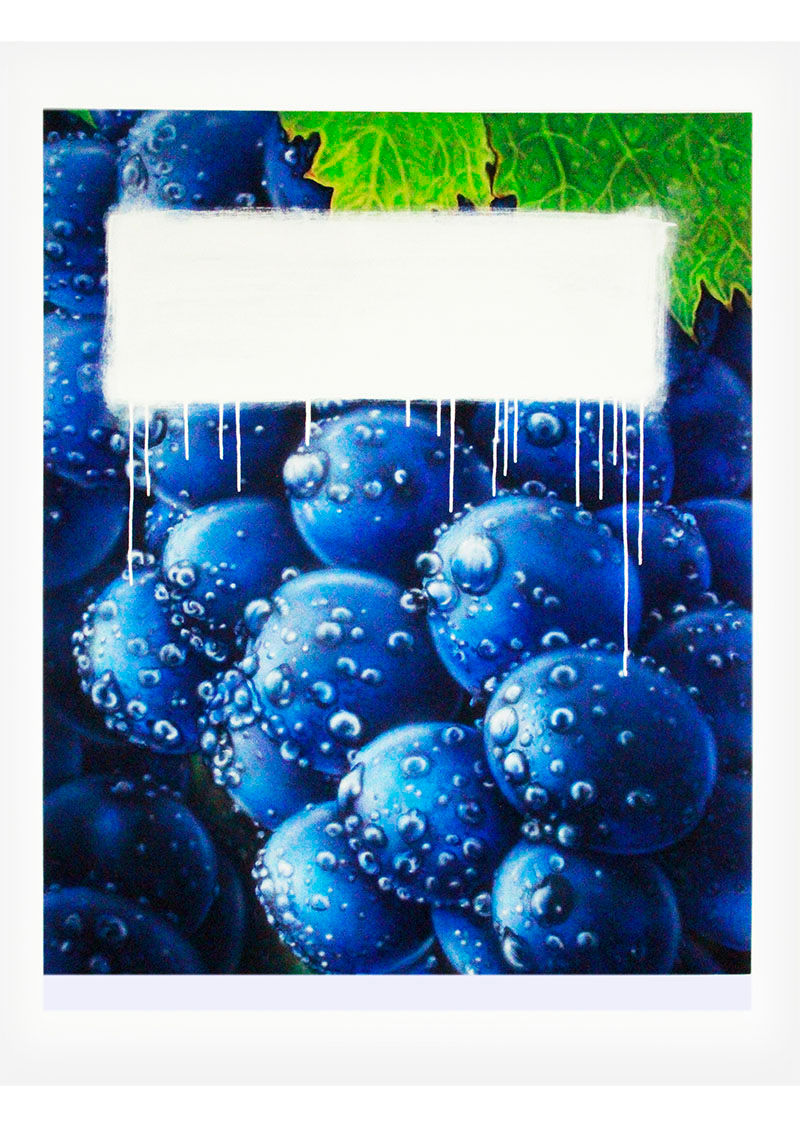
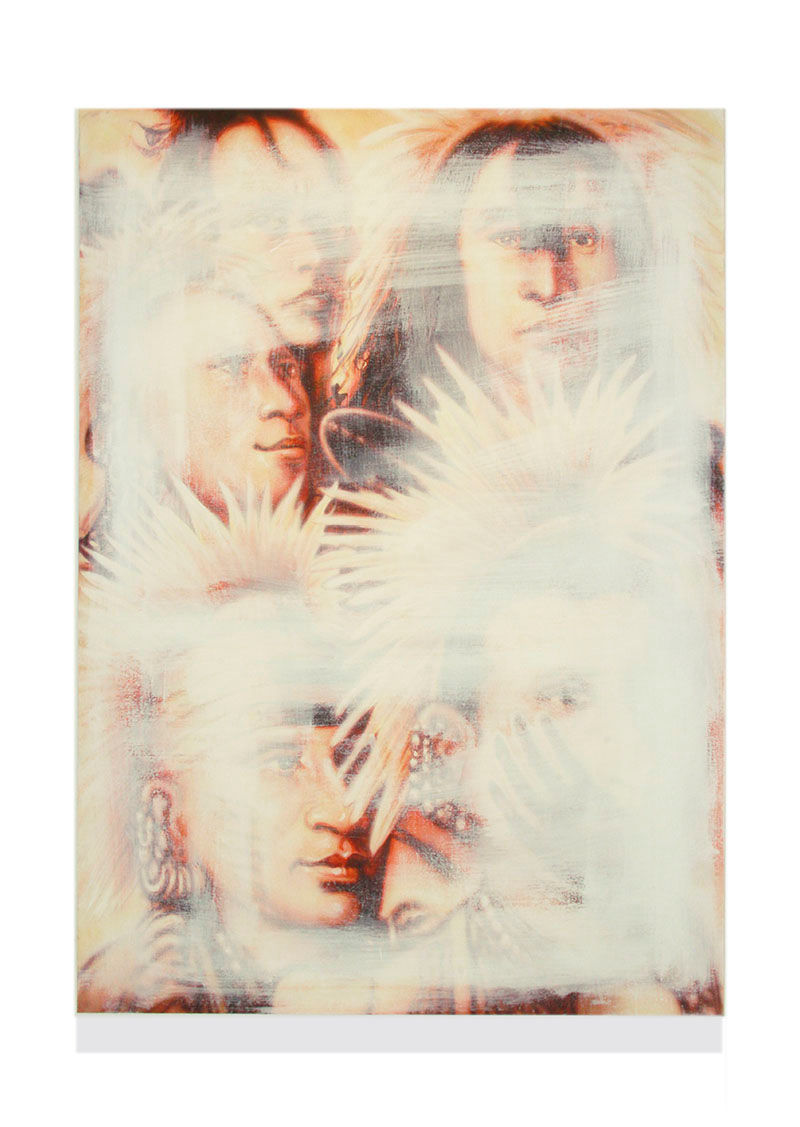
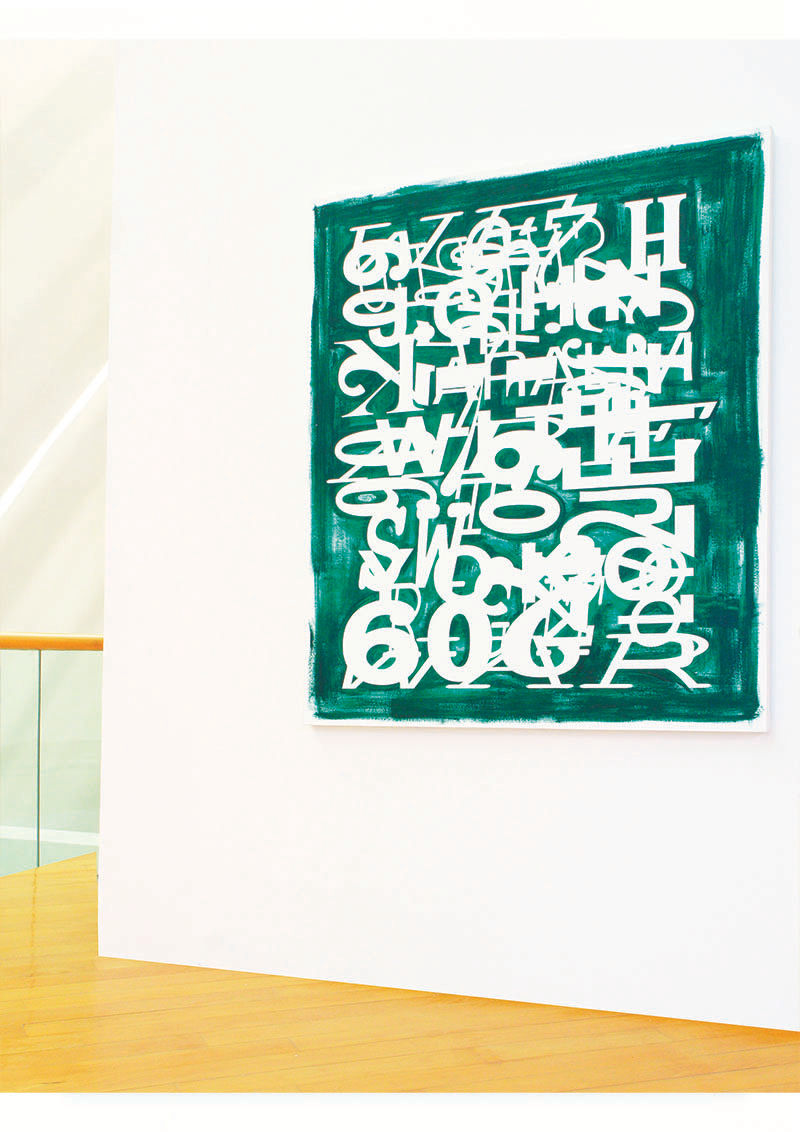

A Collection Of Vinyls
Scraps of vinyl can elicit all kinds of connotations. Approximation and association—the otherwise purposefully blurred indicators of transgressive mark-making—are the essence of abstraction. All kinds of suggestions fly around the surface of materials enlisted to stick together long enough to make an impression. References to past-dated periods of graphic history are the hallmark of the operation. The impression of being overly accumulated and thereby overstimulated is an indication that something unexpected may suddenly pop into focus. The lesser marks will wait their turn for another exciting episode later on. By definition, aesthetic pleasure is grounded in familiarity. It’s undeniable that even small chips of vinyl have a 1950s vibe.
Bangkok 2011 - 2016
Vinyls Wall Piece




Sean Penn
Curtains
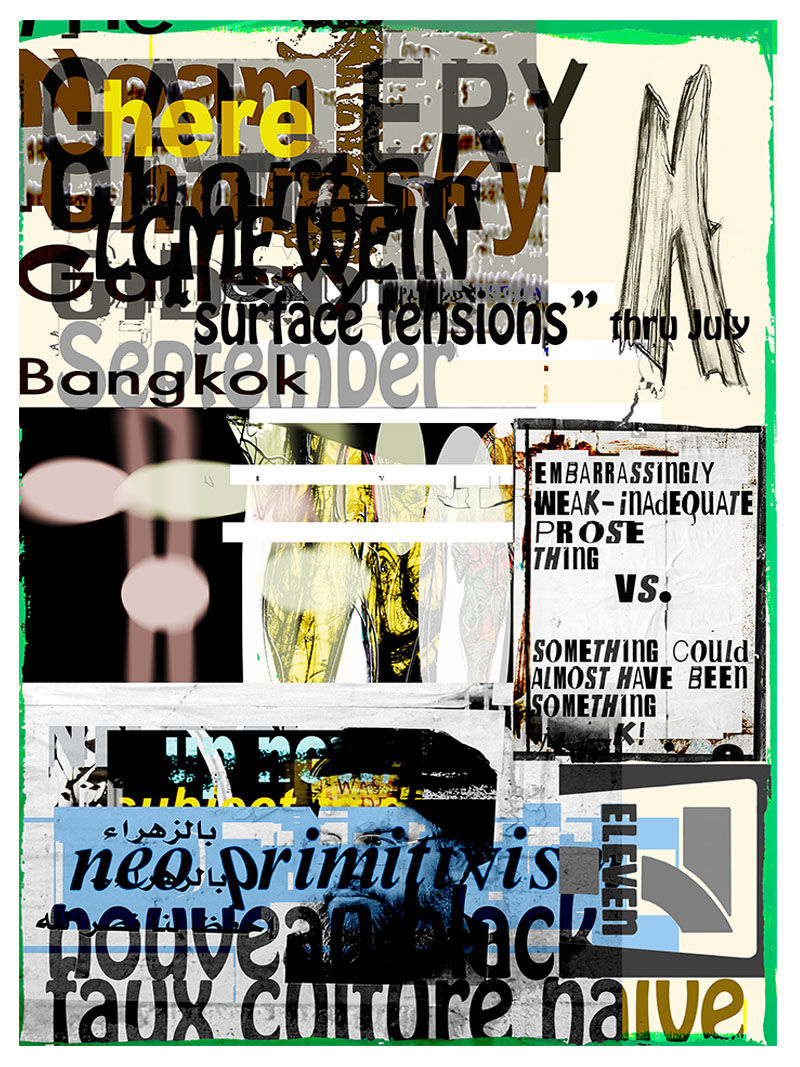
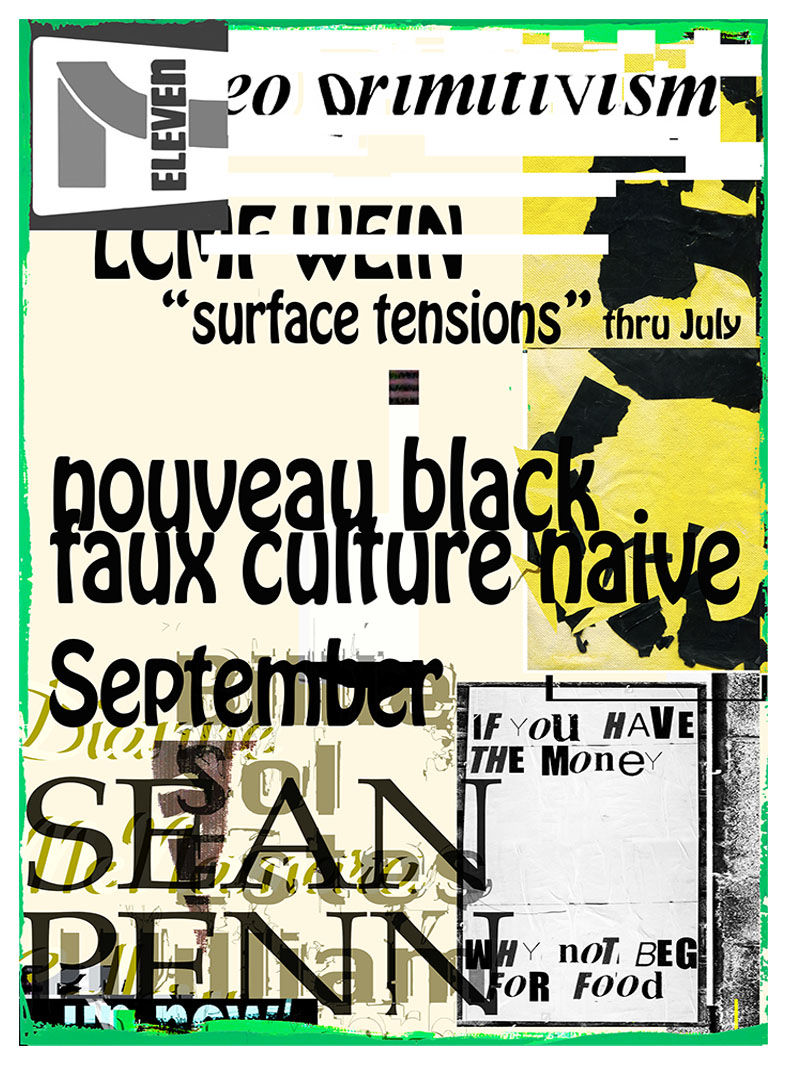


Vinyls
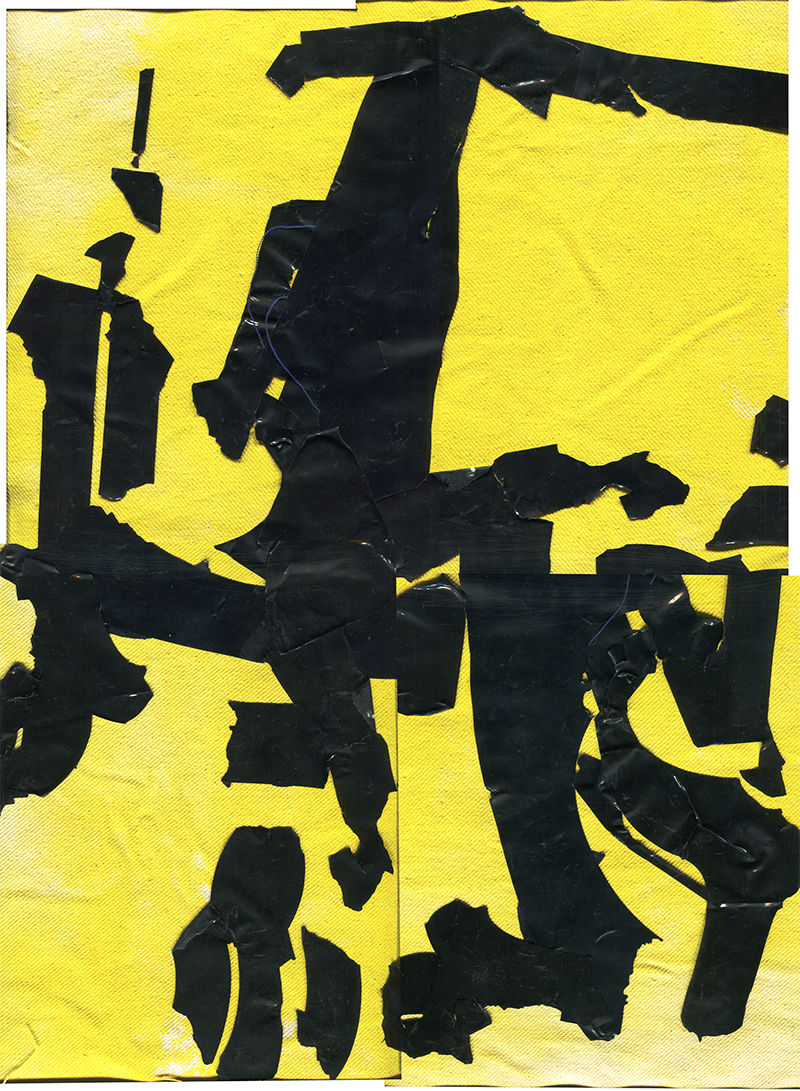
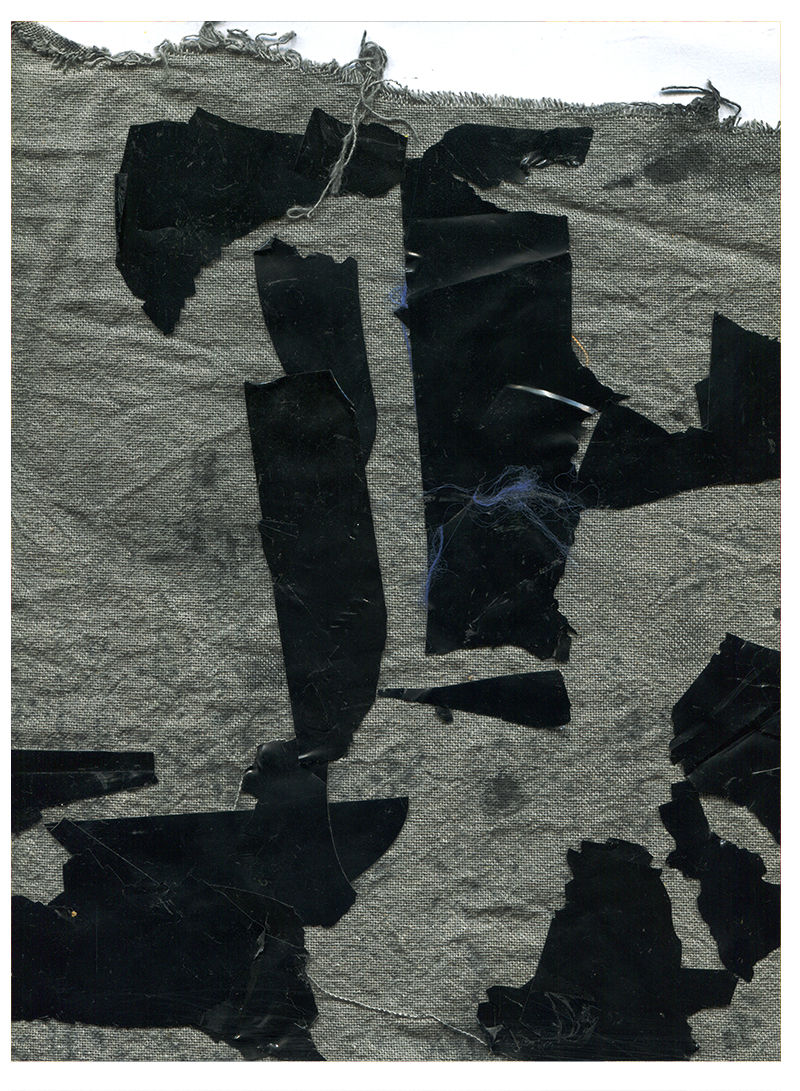
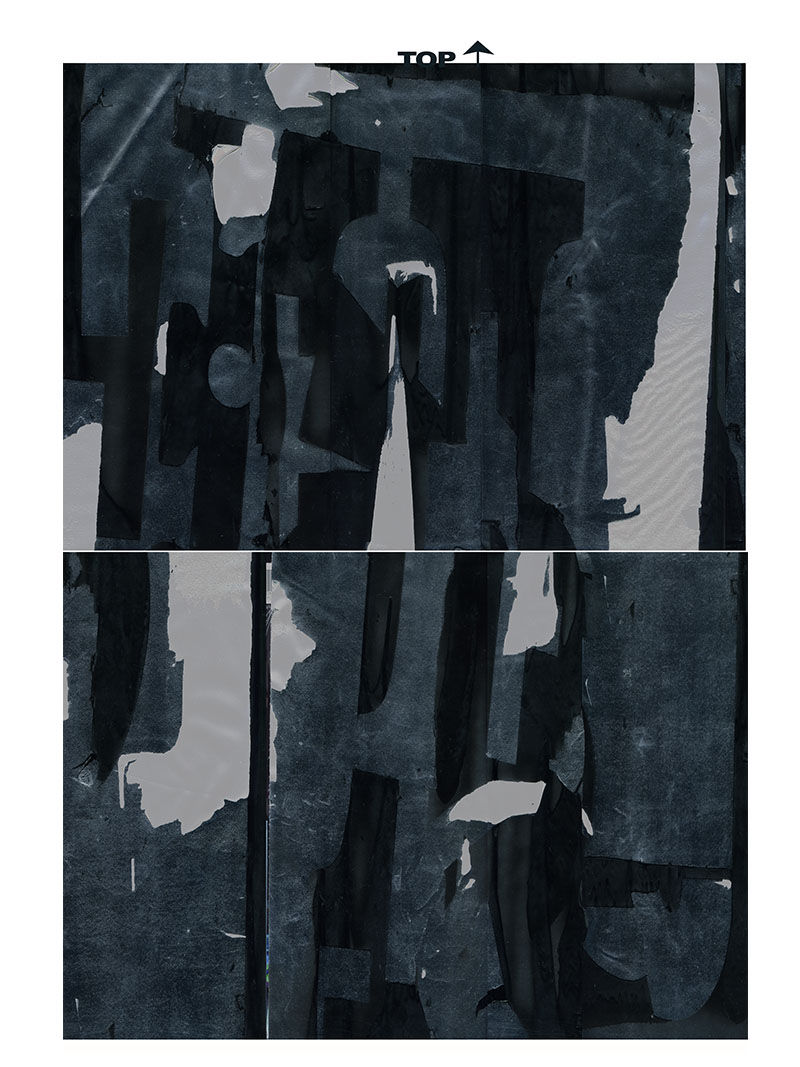

Repurposed and reused was the mode that ran through almost all of the Bangkok visual work. Files layered over other files, over others, over others. Graphite drawings were never meant to be stand-alone exhibition fodder. I used any method available to make a graphic mark to insert where need be. The idea of championing fleeting moments that were barely there in the first place was also part of the method of these files and pictures, which also became the directive for various prose panel groups. Wave a banner or a flag for a half-baked idea or the slurred speech of an abberant, poorly composed thought.
NeoPrimitivism
In November of 2019, I was invited by Cornelia Lauf, a curator of esoterically grounded projects, to spend a week in residence on the island of Sicily, in the hills above Palermo, as the artist-in-residence at Masseria Pernice. A wonderful idyllic place, a working farm with vineyards and olive groves—an incredible place to be. I was introduced to a working studio in a small stone building, more or less empty, with only an oversized work table. The gentleman directing the residence, Paolo Sallier de La Tour, brought in several rolls of light-weight packing cardboard. Without question, this was the way it would begin. There was a bucket of various paints and brushes—very traditional, standard studio materials. Later, we discussed what other types of materials I might need. I didn’t want any kind of making process to expand beyond the requisite simplicity of the farm.
Paolo and I decided to make the trip to a hardware store in Palermo, which is a terrific little city and, for me, very inspiring. The hardware store was a great idea, and the various materials we picked up were simple things like a couple quarts of black and white enamel, rope, and glue—nothing elaborate or even remotely dramatic. It was enough. The idea was to make it be enough.
Bangkok, Palermo 2015 - 2019
Fabrics
Birth of a Slogan
Pernice
Boards
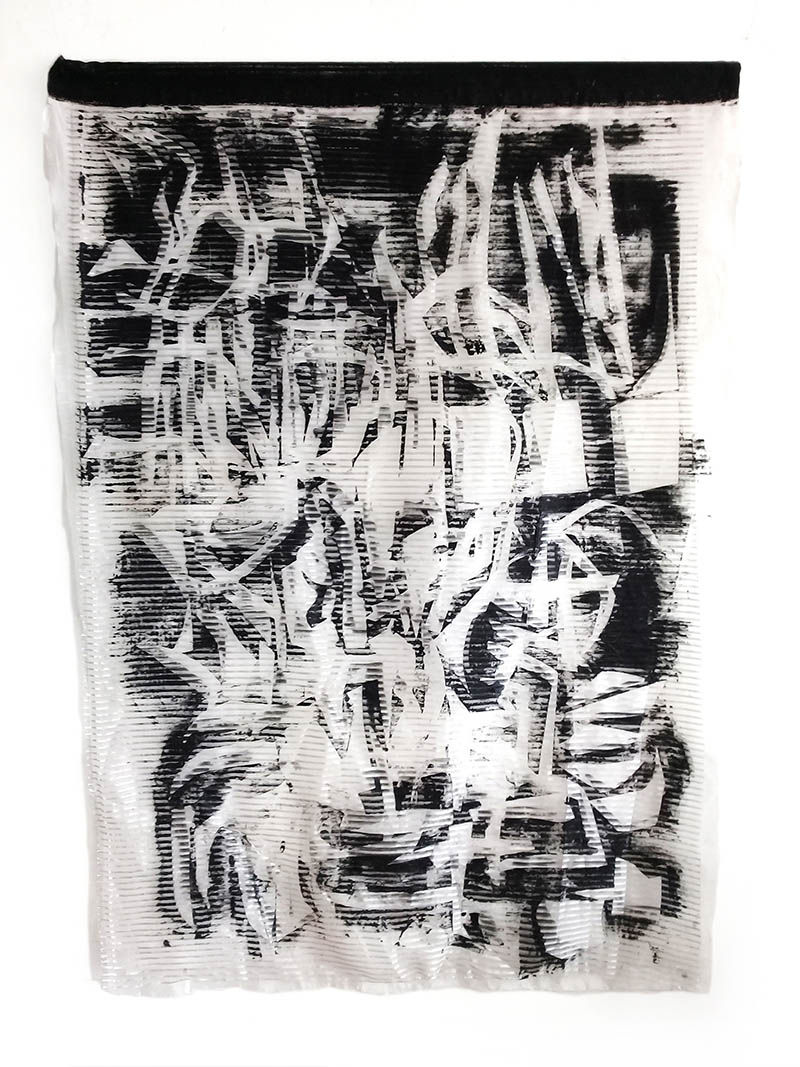
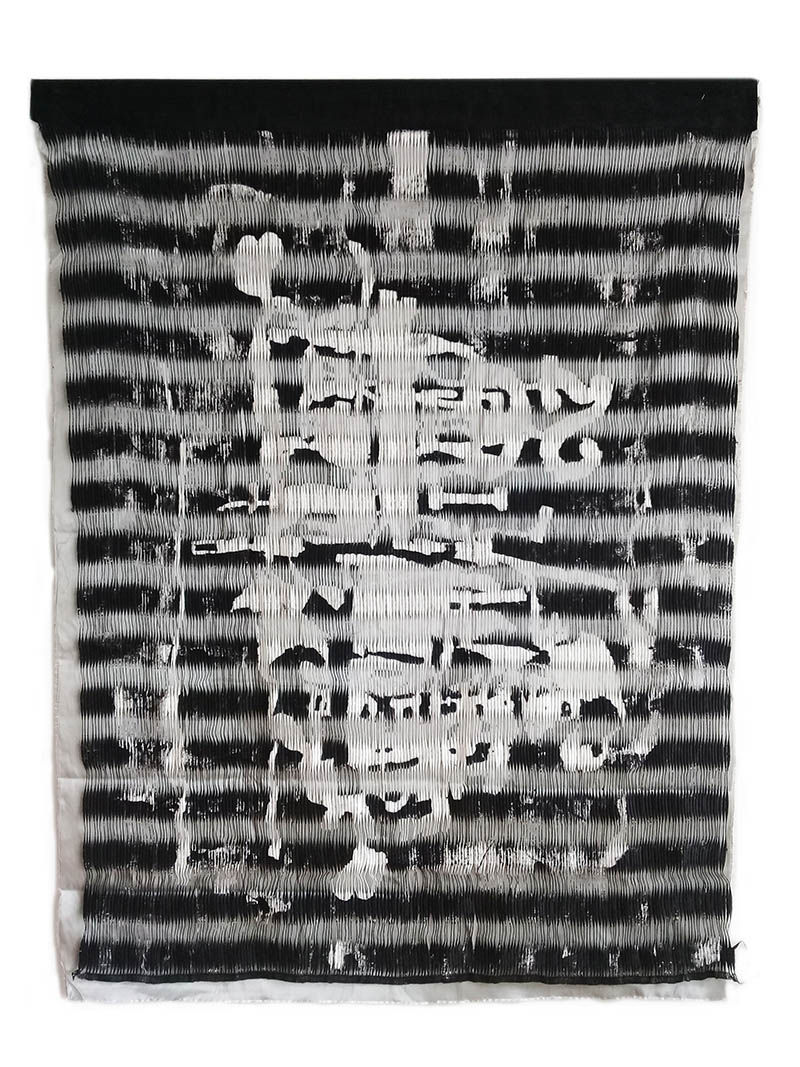
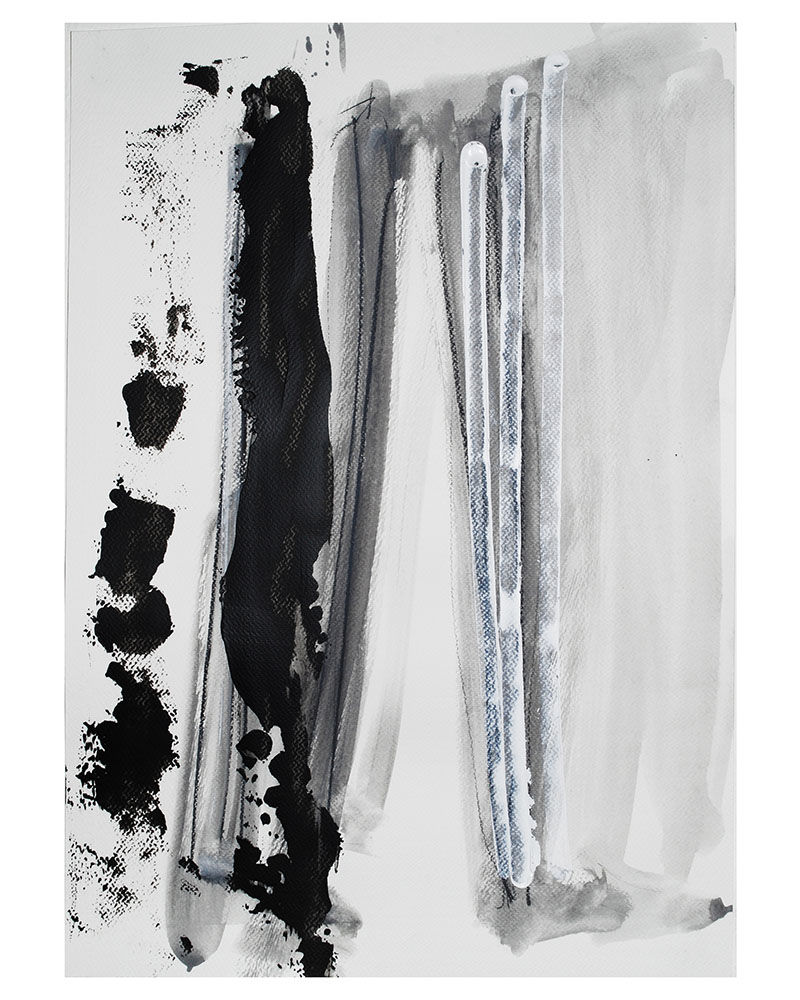

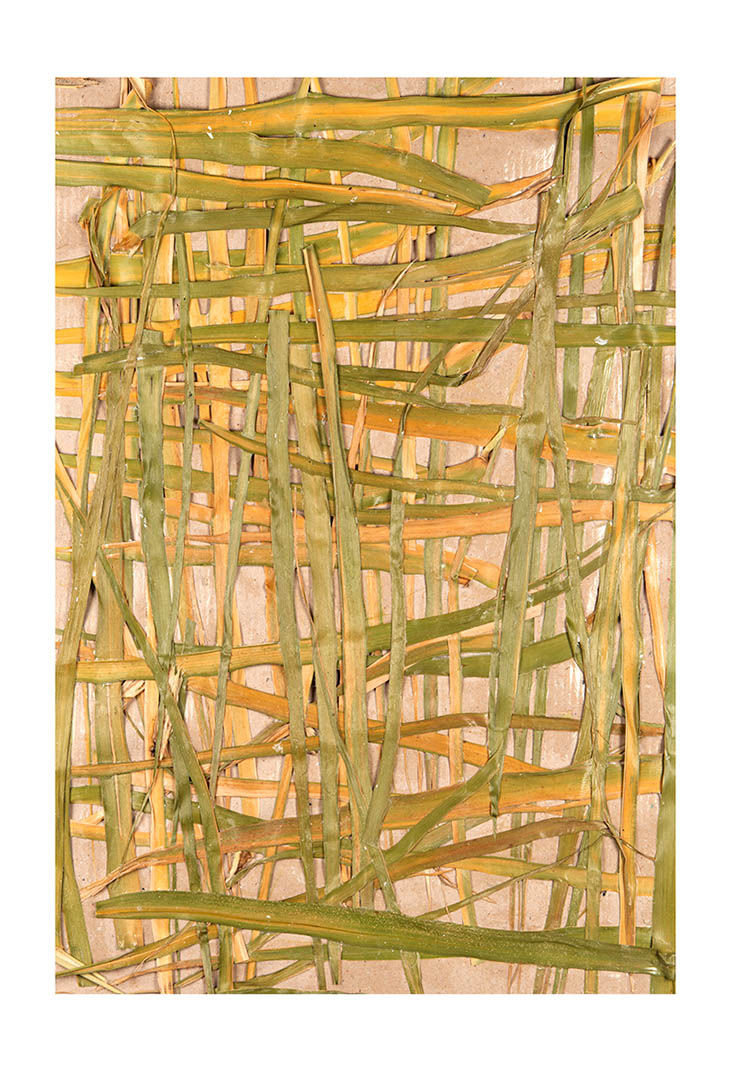
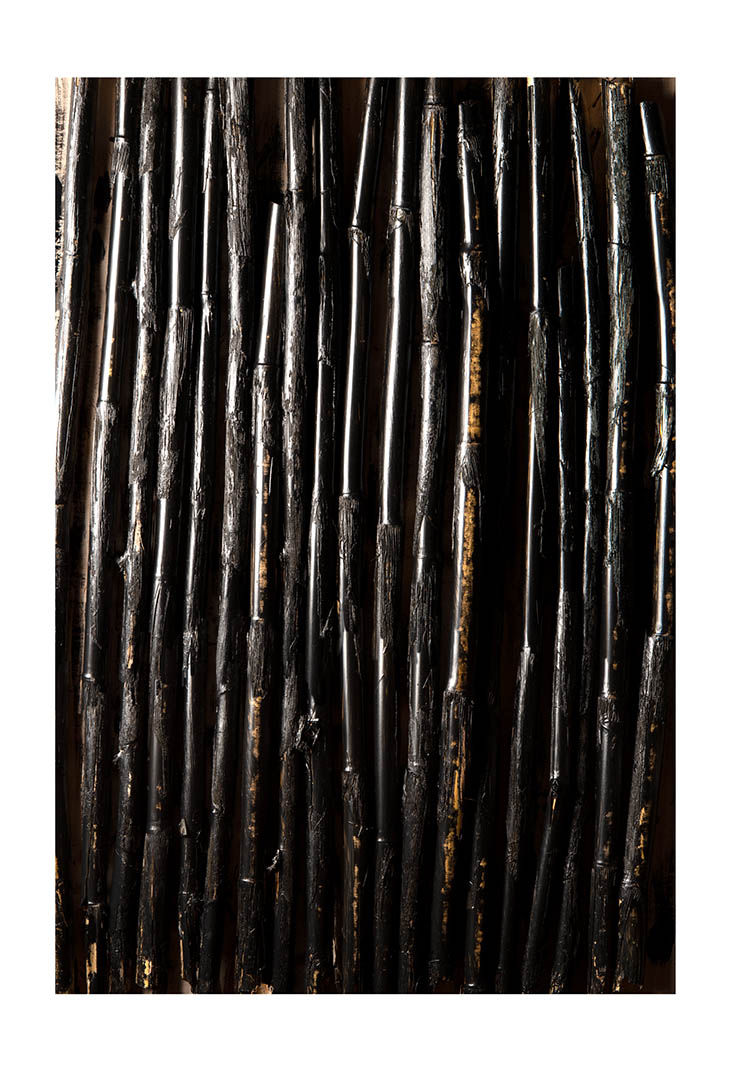
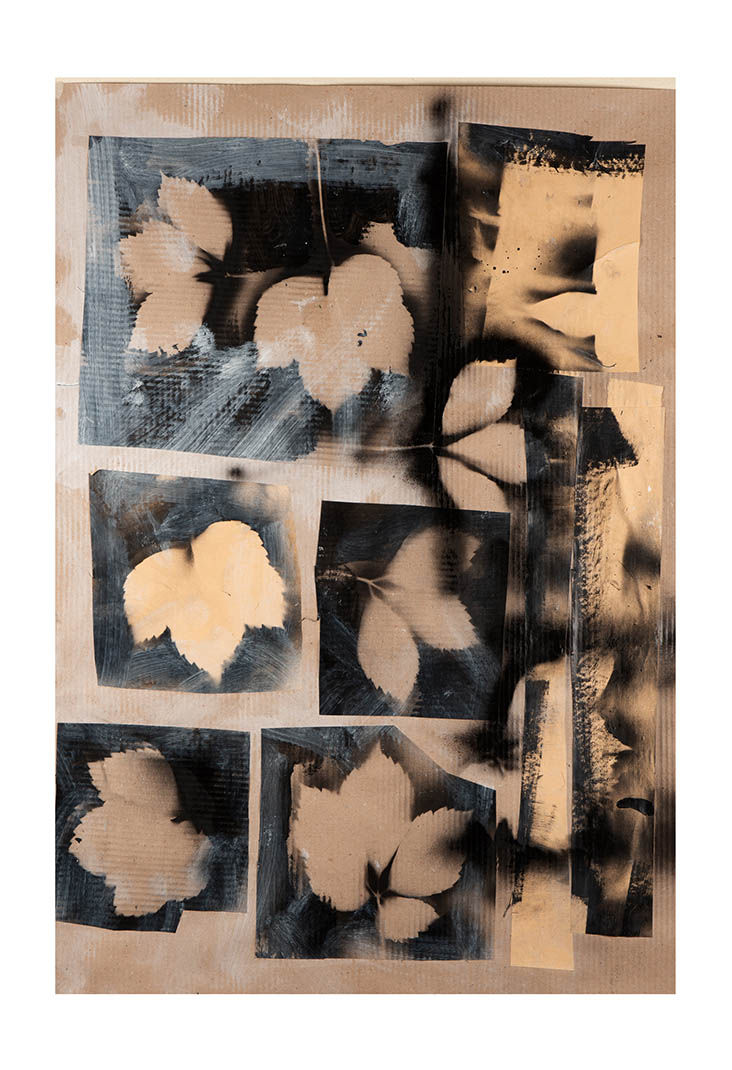

Disassociated concentration became the process, which is what I called it—don’t overthink it; keep it basic, if not crude; be as a primitive: splish, splat, cut, glue, drag stuff. Over the next few days, I wandered around the barns and fields, collecting anything that looked like it could be glued to a sheet of packing cardboard. Feed bags, outdated calendars, grass stalks—I unraveled a hemp doormat and pounded flat a bunch of dog food cans.
Prose Boards
In Bangkok, I started writing up ads with messages for potential customers or people who might find the aesthetics engaging. The tone was aggressive and distancing, and the target audience didn’t exist. Essentially, it was an act of striking out at the ether. The backend of the process was to accumulate as many of the compositions as possible. They became divided-up, broken scenarios where the full narrative of the pitch or the extended concept story was scattered across visual blurbs and confusing, competitive graphics. Eventually, some became even more winged and essentially became lists of like-minded words. I’ve never been interested in poetry, but I’d like to belong with that crowd, which is why I call them prose boards. They were printed on all manner of fabrics and assembled in a variety of gallery-like contexts.
There are precedents for critical sloganism and how a brief burst of prose functions in the collective consciousness. The debatable origins of the slogan are newspaper headline grabbers, advertising jingles, and taglines that stick. Progressivism found a way in, sometime along about: be all you can be, the pause that refreshes, and just do it. Jenny Holzer’s Truisms are the best example of pointed indicators; succinctly stating what goes without saying. I worked with slogans that prefer to do nothing other than indicate themselves, sometimes with references from way out there and far back there. The posters play with supposed meanings referenced from other places, familiar places, but some of them antagonistically.
Bangkok, Palermo, Virginia 2015 - 2023
Slogan Boards
Torn Posters


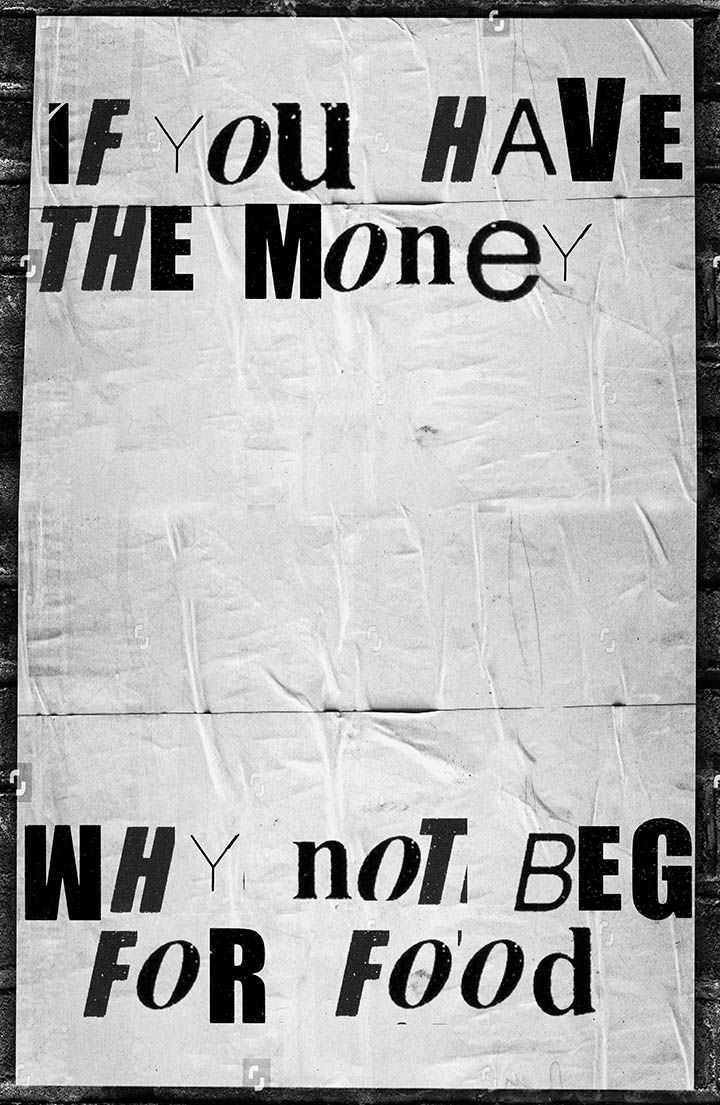

Beat
Gang Fiction


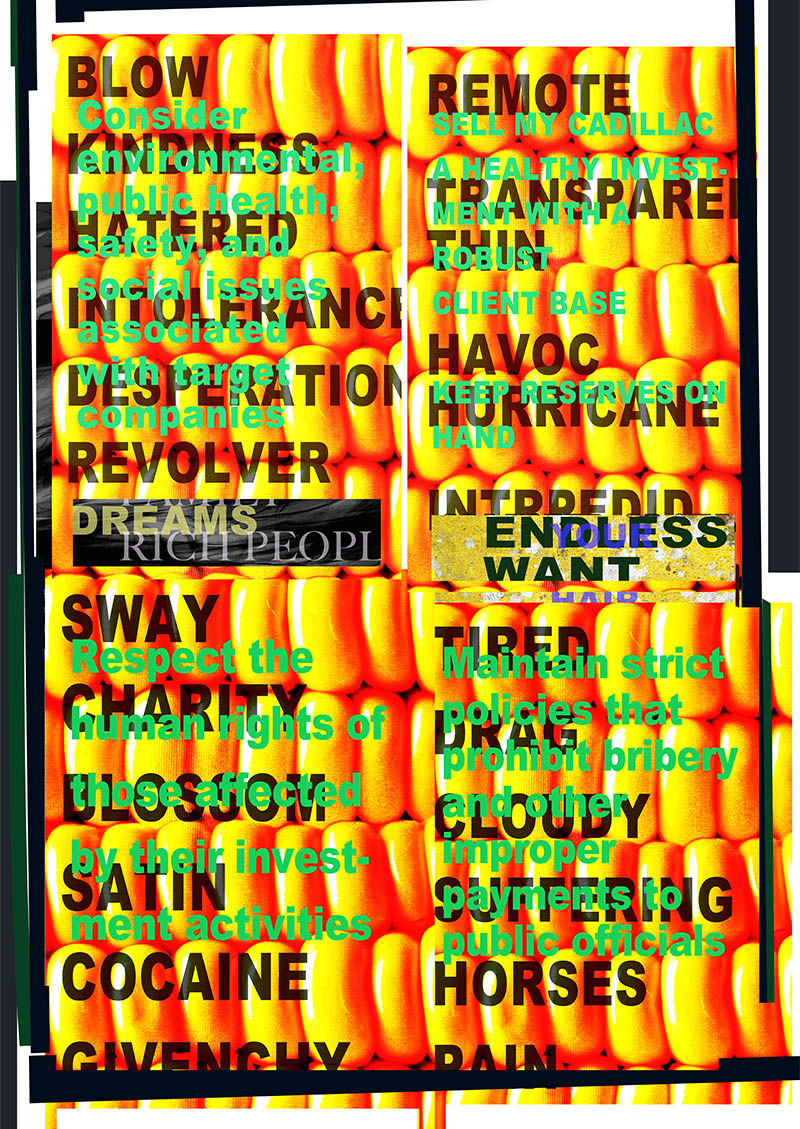

More formal prose pieces started to show up on my bags and fabric prints. I like the utility of vertical lists of words. Also in the Sean Penn studio work, a name that stuck, the prose was heavily ganged and stacked. Words as graphic can leave a terrific design impression. In Richmond, I did spend time writing more poetry-like paragraphs; those were worked into the Beat prose boards—American history, the Civil War, Revolutionary soldiers running through the woods nearby where I lived. Their graveyard in the park where I wrote. Again, pasted together and ganged-up accumulation is how it winds up.
Fiction
I’ve been drawn to the persuasive fundamentals of fiction throughout all of my studio work. The formula has varied, but broadly, the exhibitions are the work of fictional artists whose work I, the outsider spokesperson, have edited and am now championing, bringing to the attention of people who should be interested. Also, I’ve invented elaborately colorful quasi-professionals—fictional versions of myself—and presented their experimentation as the art work exhibited or reassembled. Probably cynical, but for me, the idea of faking the artist persona is more honest than straight-up investing in the identity of the artist as a specially endowed, perhaps privately troubled, culture maker. Somehow, that feels embarrassing.
New York, Bangkok, Virginia 1994 - 2024
Staging and Forensic
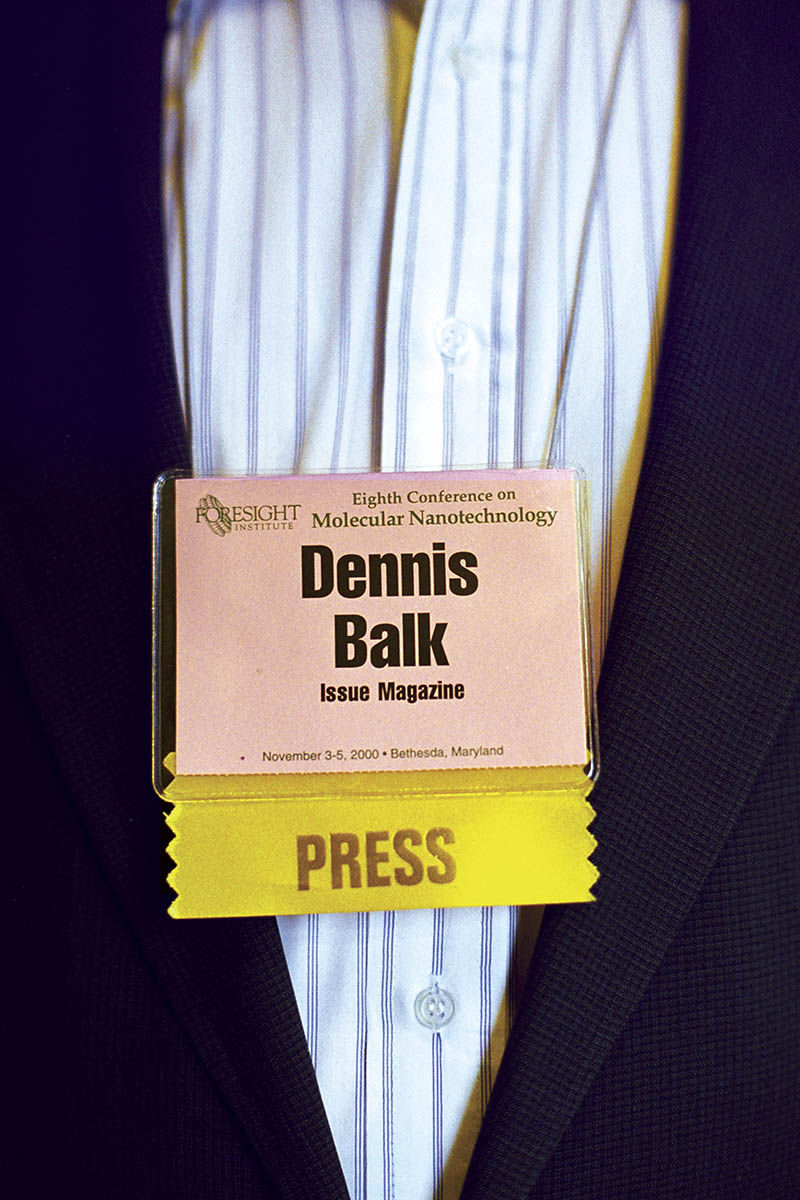
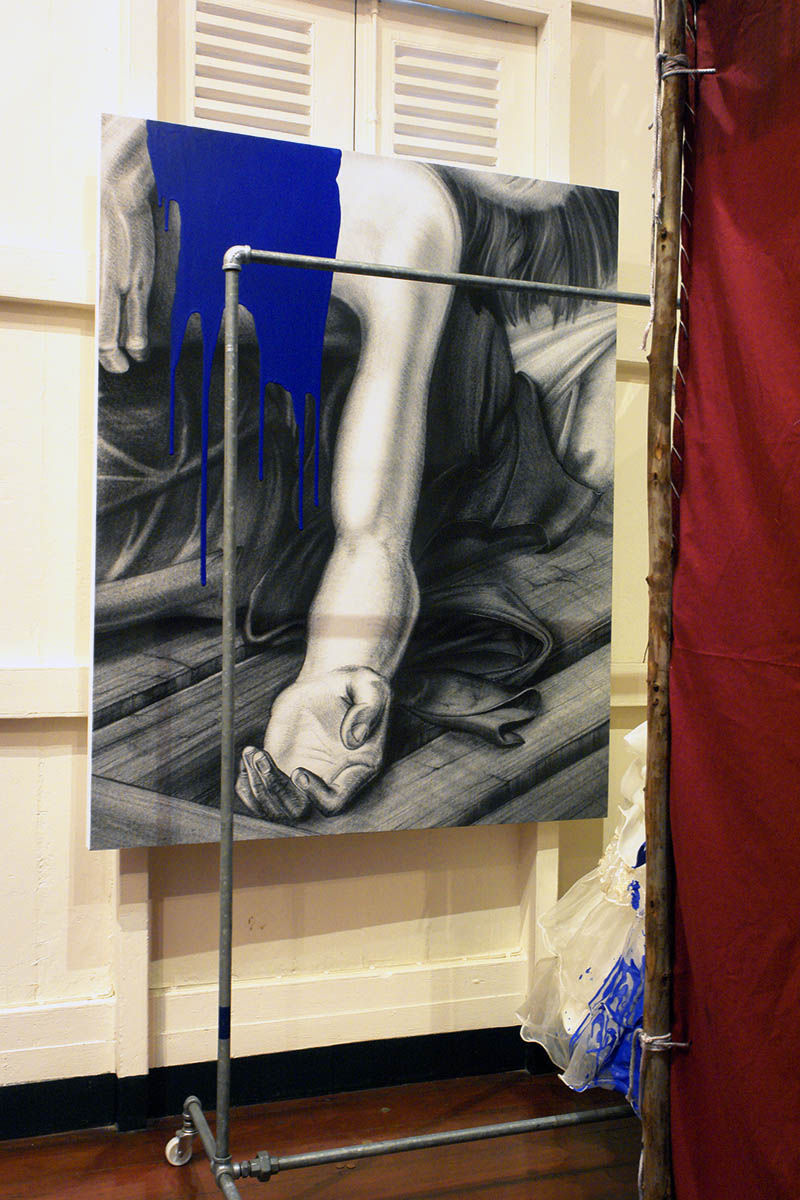



In the more recent work, I’ve invested in the idea that the exhibition material comes about by way of impeccable forensic investigation as well as the good fortune of discovering what has been left behind after the subject has departed, typically for especially dramatic reasons. The physical objects stand alone as their own comprehensive fiction—demonstrably fictional. Some of this work has been heavily dependent on the published narrative that exists alongside the physical evidence. The book tells the story; the objects are the verification of credible evidence. Some of the work exists purely as documents that reveal the narrative through their own particular physical clues and suggestions, like criminal profiling. Some of it is highly speculative and far-out sci-fi. So, it’s a mix of storytelling modes and their ties to the objects that have physical properties. Unlike sculpture, which is efficiently independent of an accompanying script.
Editorial
The separate visuals within the exhibition novels are a decent way to work fast without any expectation of exhibiting the work or highlighting the work as a stand-alone object or picture. While considering the conceptual implications of the theme of a chapter, I develop editorial objects and small works. I typically need a page to parallel the text. Not necessarily to illustrate, but to be there as an assist. Those works are made, photographed, and trashed. No reason to hang on to them; they serve no other purpose than to editorialize or serve as a caption.
Virginia 2019 - 2024
Editorials




The caption makes demands and will be a good partner. If there is a double world here—one side saying, the other side hearing, maybe knowing—then it’s the caption which must bridge the two. It’s not a happy accident that literary enthusiasts invented the metaphor.
The one true vehicle to get things done. The metaphor alone volunteers to get in there, dig out the trenches, and delineate the affairs in which the experiences and memories of the right hemisphere of the brain become auditory and typographic daydreams.
The sentence can’t relay the entire metaphor, it’s not designed for the task. If you’re lucky, you’ll see through the metaphor into the chamber of the living real, where the non-conscious, mental schema volition in the face of novel stimuli—is mediated through a linguistic control mechanism and experienced as intelligence.